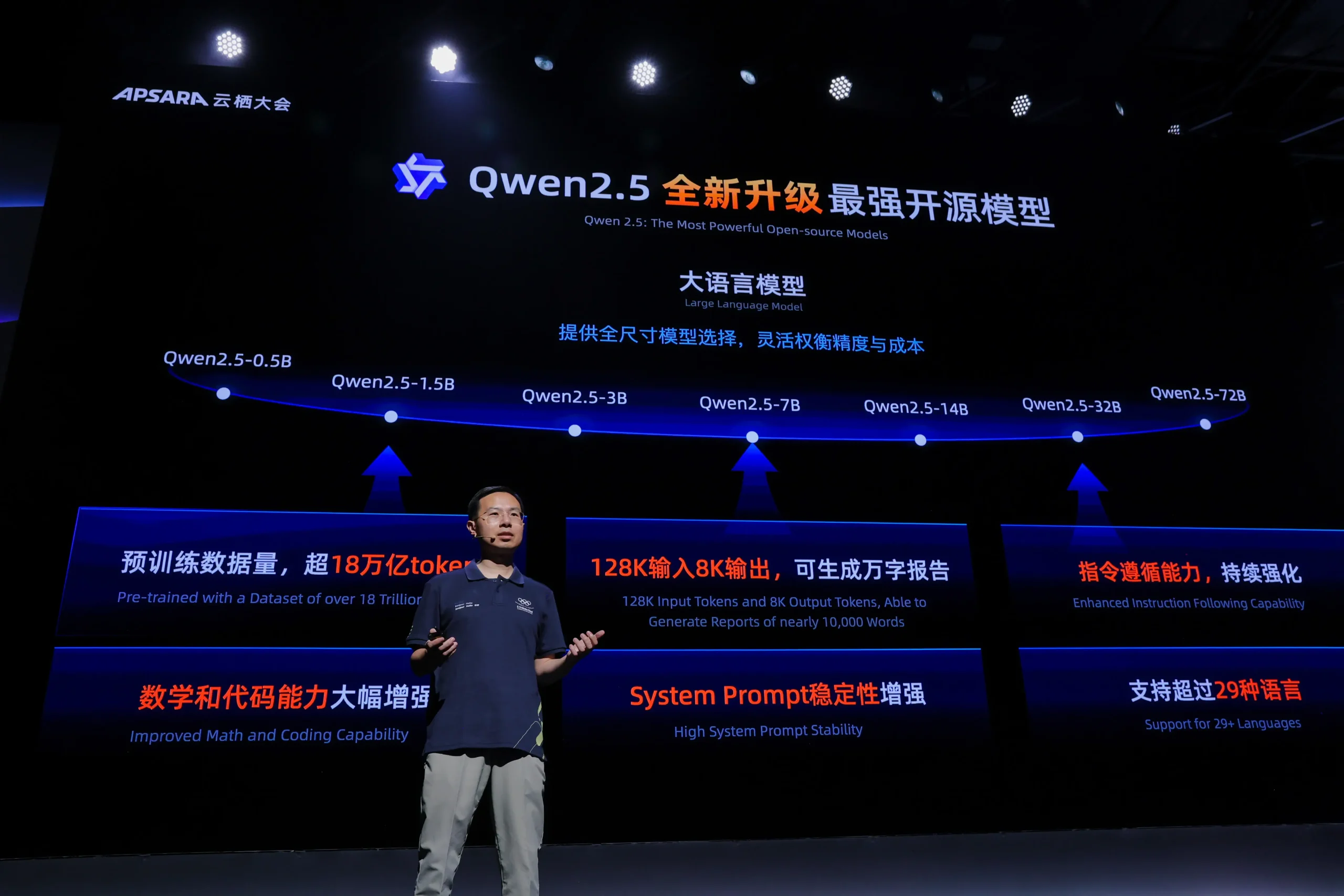AI in Retail eCommerce is no longer an experimental idea; it has become the very foundation of how digital retailers compete, innovate, and build lasting relationships with customers. At its core, AI in Retail eCommerce leverages advanced technologies such as machine learning, natural language processing, and predictive analytics to completely redefine how online businesses operate and grow. These technologies allow retailers not only to automate tasks but also to make smarter, data-driven decisions at every stage of the customer journey. From delivering hyper-personalized product recommendations and powering intelligent search functions to detecting fraud in real time and optimizing supply chains with precision, AI equips businesses to meet rising customer expectations while simultaneously improving efficiency and profitability at scale.
This first part of the blog explores the journey of AI adoption in eCommerce—tracing its evolution from a limited support tool to a central force that influences nearly every aspect of retail strategy. It highlights how early adopters gained a competitive advantage by integrating AI into their operations and customer experiences, setting new benchmarks for the industry. More importantly, it presents real-world examples from global leaders such as Amazon, Alibaba, Shopify, Stitch Fix, and Sephora, showcasing how AI has not only streamlined their operations but also transformed the way customers discover, shop, and engage with brands.
Together, these stories demonstrate that AI in Retail eCommerce is not just a technological upgrade but a transformative shift shaping the future of digital commerce, and they pave the way for AI in Retail eCommerce part 2, where the focus moves from early adoption and case studies to practical solutions and the innovations ahead.
Table of Contents
Evolution of AI in Retail eCommerce
The story of AI in retail eCommerce is a journey from simple tools designed to make online shopping easier to complex systems that actively shape business strategies and consumer experiences. Understanding the evolution of AI in retail eCommerce helps us see how far the technology has come and why it has become such a critical driver of the digital economy. From the early days of rule-based systems to the sophisticated world of deep learning and generative AI, AI in retail eCommerce has continually adapted to the growing needs of retailers and customers alike.
Early Stages of AI Adoption in Online Retail
The earliest applications of AI in retail eCommerce were modest compared to today’s advanced systems, but they laid the foundation for what would later become a multibillion-dollar industry powered by artificial intelligence.
- Basic recommendation engines (Amazon-style “people also bought”): One of the first practical uses of AI in retail eCommerce was the recommendation engine. Amazon, a pioneer in this space, introduced “people who bought this also bought” suggestions to guide customers toward additional purchases. While these early recommendation systems were not as advanced as the deep learning models used today, they represented a breakthrough in personalization. The algorithms relied on collaborative filtering, analyzing purchase histories to identify patterns of similarity between products and customers. This basic form of AI in retail eCommerce proved powerful, increasing average order values and shaping consumer expectations for personalized shopping journeys.
- Early chatbots and rule-based systems: Another early manifestation of AI in retail eCommerce was the development of rule-based chatbots. These systems were designed to provide automated responses to common customer queries, such as order status, shipping timelines, or store policies. While limited in scope, these early chatbots helped retailers reduce the burden on human customer service agents and introduced the concept of AI-driven interactions into online shopping. Unlike today’s natural language processing systems, these early bots operated on decision trees and predefined scripts. They lacked flexibility but established the value of automating repetitive tasks in the customer journey.
The early stages demonstrated that AI in retail eCommerce could improve efficiency, increase sales, and enhance the customer experience, even with relatively simple algorithms. These foundational systems created momentum for further innovation, showing retailers that the future of online shopping would be inseparable from AI.
Modern AI-Driven Transformation
As technology advanced, AI in retail eCommerce evolved from basic support tools into complex systems that shape business strategies. Modern AI in retail eCommerce is not just about assisting humans but increasingly about making decisions independently, backed by sophisticated data analysis and predictive modeling.
- AI moving from support role to decision-making role: In today’s environment, AI in retail eCommerce has shifted from being a background support system to taking an active decision-making role. Instead of simply recommending products, AI systems now determine which promotions to show, how to price items dynamically, and when to trigger marketing campaigns. Retailers rely on AI to allocate budgets, forecast demand, and even identify potential supply chain disruptions. By using advanced predictive models, AI in retail eCommerce provides insights that human analysts alone could not generate at the same scale or speed.
- Transition from traditional automation to deep learning and generative AI: Earlier automation in eCommerce focused on predefined rules and static workflows. Today, deep learning models analyze massive datasets to identify patterns with far greater accuracy. For instance, convolutional neural networks can power visual search, enabling shoppers to upload an image and find matching products instantly. Natural language processing allows AI in retail eCommerce to interpret complex queries, driving smarter search results and customer support. The emergence of generative AI has taken this transformation even further. Retailers can now use AI to create personalized product descriptions, dynamic ad creatives, and even synthetic product imagery tailored to different demographics. This shift represents a turning point where AI in retail eCommerce is not only optimizing existing processes but also creating new value through generative capabilities.
Modern AI-driven transformation demonstrates that artificial intelligence has become a core strategic asset in digital retail. Retailers who adopt advanced AI in retail eCommerce gain a significant competitive edge by providing more relevant, engaging, and efficient customer experiences.
Drivers of AI Adoption in eCommerce
The rapid adoption of AI in retail eCommerce has not happened in isolation. It is driven by a combination of technological, economic, and consumer-related factors that make AI both necessary and inevitable in the online retail landscape.
- Growth of data volumes: One of the most significant drivers of AI in retail eCommerce is the explosive growth of data. Every customer interaction—clicks, searches, purchases, returns—generates valuable information. Traditional analytics tools are no longer sufficient to process these vast datasets. AI thrives on big data, enabling retailers to uncover insights that were previously hidden. The more data retailers collect, the more effective AI in retail eCommerce becomes at predicting behavior, personalizing experiences, and optimizing operations.
- Rising customer expectations: Modern consumers expect seamless, personalized, and instant experiences when shopping online. AI in retail eCommerce makes it possible to meet these expectations by tailoring product recommendations, delivering real-time support, and ensuring fast, efficient fulfillment. Without AI, retailers risk falling short of customer demands, leading to dissatisfaction and lost loyalty. The pressure to meet or exceed these expectations has been a major catalyst for AI adoption.
- Increased competition and personalization demand: The digital retail environment is crowded, with thousands of online stores vying for customer attention. In this highly competitive space, personalization has become a key differentiator. AI in retail eCommerce gives businesses the tools to deliver one-to-one marketing at scale, ensuring that every customer feels understood and valued. The ability to stand out through personalized engagement is a decisive advantage, pushing more retailers to embrace AI as a necessity rather than an option.
Together, these drivers have accelerated the integration of AI in retail eCommerce into every aspect of the digital shopping ecosystem. Retailers that recognize and act on these drivers are better positioned to succeed in an increasingly demanding and competitive marketplace.
AI Applications in Retail eCommerce
The true power of AI in retail eCommerce lies in its diverse applications across the entire online shopping journey. From product discovery to checkout, and from fraud prevention to customer support, AI in retail eCommerce enhances nearly every stage of the buyer and retailer experience. These applications have matured from experimental features into mission-critical tools that shape how online retail operates today.
Product Discovery & Recommendations
Product discovery and recommendations have always been at the heart of successful digital retail. In the crowded world of online shopping, customers are often overwhelmed by the sheer number of options available. AI in retail eCommerce has fundamentally transformed how products are presented, discovered, and recommended, ensuring that every customer’s journey feels uniquely personalized. By leveraging data-driven insights, AI in retail eCommerce enables retailers to optimize product visibility, boost conversions, and create a shopping experience that is both seamless and engaging.
Personalized Product Suggestions
The most immediate and visible application of AI in retail eCommerce is the delivery of personalized product suggestions. Instead of generic lists, online stores now provide highly curated selections that align with each shopper’s tastes, preferences, and behaviors.

AI in retail eCommerce achieves this by analyzing massive amounts of data from multiple touchpoints. Purchase history, browsing behavior, wish lists, abandoned carts, and even dwell time on specific product pages are all inputs into recommendation algorithms. These algorithms are often based on collaborative filtering, content-based filtering, or hybrid models that combine both.
For instance, collaborative filtering in AI in retail eCommerce identifies customers with similar preferences and suggests products that peers with similar behavior have purchased. Content-based filtering, on the other hand, analyzes product attributes and customer profiles to recommend items that share similarities with previously purchased products. Hybrid systems take advantage of both, improving accuracy and minimizing weaknesses such as the “cold start” problem for new users.

The impact of personalized product suggestions on customer experience and business outcomes is profound. Customers feel understood and valued, while retailers benefit from higher click-through rates, increased basket sizes, and stronger loyalty. For example, companies like Amazon generate a significant portion of their sales through AI-driven recommendations. This demonstrates the direct correlation between effective use of AI in retail eCommerce and measurable revenue growth.
Another key benefit of personalized product suggestions is improved customer retention. Shoppers are more likely to return to an online store where they feel the experience is tailored specifically to them. In a market where switching costs are low and competitors are just a click away, AI in retail eCommerce gives retailers the tools to foster long-term relationships through consistent personalization.
Dynamic Bundles and Upselling
Beyond simply suggesting individual products, AI in retail eCommerce is reshaping the practice of bundling and upselling. Dynamic bundling involves recommending groups of products that complement each other, creating added value for the customer while increasing the retailer’s average order value. Upselling, on the other hand, focuses on encouraging customers to purchase a higher-end version of a product they are already considering.

AI in retail eCommerce excels in these areas because of its ability to analyze context and timing. For example, a shopper looking at a laptop might be offered a dynamic bundle that includes a laptop sleeve, external mouse, and antivirus software. This recommendation is not static; it changes based on the shopper’s preferences, browsing behavior, and purchase history. The bundle may even shift in real time depending on promotions, inventory levels, or seasonal trends.
Upselling also benefits from AI in retail eCommerce through predictive analytics. Instead of presenting random higher-priced alternatives, AI identifies when a shopper is most receptive to an upsell. For instance, if the customer has previously purchased premium products or spent a longer time evaluating higher-end models, the AI system recognizes these signals and tailors the upsell offer accordingly. This increases the likelihood of conversion without making the customer feel pressured.

Dynamic bundles and upselling powered by AI in retail eCommerce also contribute to better customer satisfaction. By providing relevant add-ons or upgrades, AI helps customers discover products they might not have thought of but which genuinely enhance their purchase. This creates a win-win scenario: customers receive more value, while retailers drive higher revenue.
From a business perspective, this application of AI in retail eCommerce can significantly impact profit margins. Bundling complementary products often reduces marketing and logistics costs while increasing the efficiency of inventory turnover. Upselling raises the average transaction size, which is especially critical in competitive markets where customer acquisition costs are high.
Cross-Selling in Real Time
Cross-selling is another powerful strategy that has been elevated by AI in retail eCommerce. It involves suggesting additional products that complement items already in the shopping cart or being actively browsed. While traditional cross-selling strategies were static and rule-based, modern AI in retail eCommerce makes this process dynamic, personalized, and highly effective.
AI in retail eCommerce systems leverage real-time data to identify cross-selling opportunities. For example, if a customer adds a smartphone to their cart, the system can instantly recommend a compatible charger, wireless earbuds, or a protective case. These recommendations are not random; they are based on purchase patterns from similar customers, current promotions, and individual shopper preferences.

Real-time cross-selling goes beyond the checkout page. With AI in retail eCommerce, recommendations can appear throughout the customer journey—on product detail pages, in the shopping cart, during the checkout process, and even in post-purchase emails. This omnichannel approach ensures that customers are consistently exposed to relevant cross-sell opportunities without feeling overwhelmed.
The effectiveness of real-time cross-selling lies in its immediacy and contextual relevance. Customers are more likely to accept recommendations when they are timely and clearly related to their intended purchase. By integrating AI in retail eCommerce, businesses can anticipate customer needs and provide solutions proactively, which enhances the overall shopping experience.

In addition, real-time cross-selling powered by AI in retail eCommerce reduces the risk of abandoned carts. By presenting relevant add-ons that increase perceived value, customers may feel more confident in completing their purchase. This also allows retailers to recover some of the potential revenue that might otherwise be lost to indecision or hesitation.
For retailers, cross-selling in real time is not only a revenue driver but also a tool for brand differentiation. Customers are more likely to return to platforms that consistently anticipate their needs and make the shopping process easier. AI in retail eCommerce ensures that these cross-sell recommendations are data-driven, personalized, and delivered at exactly the right moment.
As the online retail industry continues to evolve, the importance of these applications will only grow. Shoppers will expect deeper personalization, more intuitive product discovery, and seamless integration of recommendations across all channels. AI in retail eCommerce is the technology that makes this vision possible, ensuring that retailers not only meet current demands but also anticipate future expectations.
AI-Powered Search Engines
Search has always been a fundamental part of online shopping, but traditional keyword-based search engines often fall short in helping customers find what they truly want. Many users abandon their searches when faced with irrelevant results, poor filtering, or a lack of personalization. This is where AI in retail eCommerce provides a transformative advantage. By leveraging natural language processing, visual search, and voice search, AI-powered search engines are making product discovery faster, smarter, and more intuitive than ever before.
Natural Language Processing for Search Queries
One of the most significant advancements enabled by AI in retail eCommerce is the use of natural language processing (NLP) for interpreting customer queries. Traditional eCommerce search engines relied heavily on exact keyword matches. If a customer searched for “comfortable running shoes for flat feet,” the system might return results for “running shoes” but miss the context of “comfortable” and “flat feet.” This lack of sophistication often led to frustration and lost sales.

AI in retail eCommerce changes this dynamic by applying NLP to understand intent and context. Instead of simply scanning for keywords, AI-powered search engines analyze the meaning behind customer queries. They can differentiate between attributes (e.g., “red dress” vs. “dress for a red carpet event”), recognize synonyms, and even correct spelling mistakes automatically.
For example, if a shopper types “lightweight waterproof jacket for hiking,” NLP algorithms in AI in retail eCommerce break down the query into components—“lightweight,” “waterproof,” and “hiking”—to return results that fit all criteria. This not only improves accuracy but also creates a more seamless shopping experience that mirrors the way humans naturally communicate.

Beyond text-based queries, NLP in AI in retail eCommerce also supports multilingual and cross-cultural understanding. Customers shopping on global platforms can type queries in their native language, and the AI system translates and matches them with relevant products. This capability allows retailers to expand into new markets without forcing shoppers to adapt to rigid keyword systems.
The result is a more intuitive and satisfying product discovery process. Customers save time, feel understood, and are more likely to complete their purchases. Retailers benefit from higher conversion rates, reduced search abandonment, and stronger customer loyalty. In short, NLP has become a cornerstone of AI in retail eCommerce search engines, ensuring that customers get exactly what they’re looking for with minimal effort.
Visual Search
Another groundbreaking innovation enabled by AI in retail eCommerce is visual search. Instead of relying solely on words, visual search allows customers to upload or capture an image and instantly find similar products. This application is particularly valuable in fashion, home décor, and lifestyle categories, where visual appeal drives purchasing decisions.

AI in retail eCommerce uses computer vision algorithms to analyze the uploaded image. The system breaks it down into features such as color, texture, shape, and style, then compares these attributes against the product catalog. Within seconds, the shopper is presented with items that closely match the photo, even if they lack the vocabulary to describe the product.
For example, a customer might see a celebrity wearing a pair of sneakers on social media. Instead of guessing the brand or searching with vague terms like “white chunky sneakers,” they can simply upload the photo. AI in retail eCommerce identifies the characteristics of the shoes and returns a selection of similar options available for purchase.

This application is not limited to fashion. In furniture eCommerce, a shopper might take a photo of a chair they like in a café. Visual search powered by AI in retail eCommerce can then find similar chairs across multiple online catalogs. The same principle applies to jewelry, cosmetics, and even grocery items.
Visual search also reduces the gap between inspiration and purchase. Consumers often encounter products they admire in offline contexts—on the street, in a magazine, or in a friend’s home. With visual search, AI in retail eCommerce bridges this gap by turning offline inspiration into online action.
From a business standpoint, visual search enhances engagement and increases the likelihood of conversions. Customers feel empowered to shop with ease, while retailers reduce friction in the buying process. Furthermore, visual search strengthens brand competitiveness by offering a cutting-edge feature that differentiates the shopping experience from traditional keyword-only platforms.
Voice Search for Retail eCommerce
Voice search is another rapidly growing application of AI in retail eCommerce, reflecting broader shifts in consumer behavior. With the rise of smart assistants like Alexa, Google Assistant, and Siri, customers are increasingly comfortable using voice commands to interact with technology. Retailers are now integrating AI-driven voice search into their eCommerce platforms to meet this demand.

AI in retail eCommerce enables voice search by combining NLP, speech recognition, and contextual understanding. When a shopper says, “Find me affordable organic coffee beans with free shipping,” the system processes the spoken request, interprets the meaning, and returns relevant results. Unlike simple keyword searches, AI-powered voice search understands modifiers such as “affordable” and “organic,” delivering results that align with the customer’s intent.
Voice search aligns with the growing trend of hands-free and mobile-first interactions. Shoppers can use voice commands while multitasking, such as cooking dinner or commuting, making it a highly convenient feature. This convenience is particularly powerful in retail categories like groceries, everyday essentials, and subscription-based items, where speed and simplicity are valued.

Moreover, AI in retail eCommerce allows voice search to integrate seamlessly with personalized recommendations. For example, when a customer asks, “Reorder my favorite moisturizer,” the system identifies their past purchases and immediately processes the order. This creates a frictionless shopping journey where AI anticipates needs and reduces effort for the customer.
For retailers, voice search opens new opportunities for engagement and loyalty. By integrating voice-enabled shopping into mobile apps or smart devices, retailers can position themselves at the forefront of innovation. At the same time, voice search provides valuable data on customer intent, language patterns, and preferences, which can further refine personalization strategies.
However, implementing voice search in AI in retail eCommerce requires careful design. Retailers must ensure that voice interactions are natural, accurate, and responsive. They must also balance convenience with privacy, as voice data is sensitive and subject to increasing regulatory scrutiny.
Pricing Optimization
Pricing has always been one of the most critical factors in retail success. In the traditional brick-and-mortar model, prices were relatively static, adjusted only seasonally or during promotions. But the digital landscape is far more dynamic. Customers can compare prices instantly across multiple platforms, competitors can change their pricing in real time, and demand can shift dramatically within hours. In this environment, AI in retail eCommerce has emerged as a powerful solution for pricing optimization. By using machine learning algorithms, predictive analytics, and real-time monitoring, AI in retail eCommerce helps businesses set smarter prices that maximize both sales and profit margins.
Dynamic Pricing Strategies
One of the most impactful applications of AI in retail eCommerce is dynamic pricing. Instead of relying on fixed prices, dynamic pricing uses algorithms to adjust prices continuously based on demand, inventory levels, and customer behavior.
AI in retail eCommerce analyzes large volumes of data in real time to determine the optimal price for each product at any given moment. This includes factors such as:
- Historical sales data and demand patterns.
- Customer segments and their willingness to pay.
- Current inventory levels and restock cycles.
- Competitor pricing trends.
- Market-wide demand signals such as holidays or special events.
For example, an online electronics store might use AI in retail eCommerce to adjust the price of a laptop dynamically. If demand surges due to a back-to-school season, the AI system increases prices slightly to maximize profit margins while still being competitive. Conversely, if inventory levels are high and demand is slowing, the AI system reduces prices to encourage sales and prevent overstock.

Dynamic pricing is particularly effective in categories where competition is fierce and margins are thin, such as fashion, electronics, and consumer goods. By using AI in retail eCommerce for dynamic pricing, retailers can maintain competitiveness while capturing maximum revenue.
The key advantage of AI-driven dynamic pricing lies in its scalability and precision. Human pricing managers simply cannot process the millions of data points required to optimize prices across thousands of SKUs in real time. AI in retail eCommerce automates this process, ensuring that every product’s price reflects the current market conditions and customer demand.

Dynamic pricing also enhances personalization. For instance, AI in retail eCommerce can offer different discounts to different customer segments. Loyal customers might receive smaller discounts because they are less price-sensitive, while new customers might be offered deeper promotions to encourage conversion. This level of granularity ensures that pricing strategies align with broader customer acquisition and retention goals.
Competitor Price Monitoring
Another crucial aspect of pricing optimization in AI in retail eCommerce is competitor price monitoring. In the digital marketplace, retailers are constantly battling for visibility and conversions, and customers often compare prices across platforms before making a purchase. Failing to keep track of competitor pricing can result in lost sales or eroded margins.

AI in retail eCommerce automates the process of monitoring competitor prices across multiple channels, including websites, marketplaces, and comparison platforms. These systems scrape and analyze competitor pricing data in real time, providing retailers with actionable insights.
For example, a fashion retailer using AI in retail eCommerce can instantly detect when a competitor lowers the price of a popular handbag. The system alerts the retailer and suggests a price adjustment to remain competitive. Alternatively, if the AI detects that competitors are out of stock for a trending product, it might recommend raising prices slightly to capture additional margin while demand remains high.
Competitor price monitoring powered by AI in retail eCommerce also goes beyond surface-level comparisons. AI systems can analyze the context of competitor pricing strategies, such as:
- Whether competitors are running temporary promotions.
- How long discount campaigns last.
- Which products are being bundled with others.
- Regional variations in pricing for global markets.
By integrating these insights, retailers can develop smarter pricing strategies that do not simply copy competitors but strategically position themselves in the market.

In addition, AI in retail eCommerce can integrate competitor monitoring into dynamic pricing engines. This allows retailers to adjust their prices automatically based on competitor actions, ensuring that they remain attractive to price-sensitive customers without manual intervention.
The benefits are clear: improved competitiveness, better margin protection, and reduced risk of losing customers to cheaper alternatives. In highly competitive categories, competitor price monitoring through AI in retail eCommerce can make the difference between market leadership and irrelevance.
Seasonal and Real-Time Adjustments
Pricing in eCommerce is not static; it fluctuates based on seasonality, demand cycles, and even real-time events. AI in retail eCommerce excels in managing these adjustments, ensuring that prices are aligned with both customer expectations and business objectives.
- Seasonal pricing: AI in retail eCommerce can analyze historical data to predict demand surges during specific seasons or events, such as Black Friday, Christmas, or back-to-school shopping. Retailers can adjust prices proactively to maximize sales during peak demand while balancing profitability. For example, AI may recommend gradually raising prices for winter coats in early autumn, then offering strategic discounts as the season ends to clear inventory.
- Event-driven pricing: Real-time events such as product launches, influencer promotions, or sudden changes in consumer trends can dramatically shift demand. AI in retail eCommerce allows retailers to respond instantly. If a celebrity is spotted wearing a particular brand of sneakers, the AI system can identify the spike in search traffic and adjust pricing to capture demand before competitors react.
- Real-time optimization: Beyond seasonal adjustments, AI in retail eCommerce supports continuous, minute-by-minute optimization. This is especially valuable in categories like electronics or travel, where demand and availability fluctuate rapidly. Real-time adjustments ensure that pricing reflects not only current demand but also customer behavior signals like cart abandonment, click-through rates, or engagement with promotions.
The ability to make seasonal and real-time adjustments also enhances customer perception. Customers often expect discounts during specific periods (such as holiday sales). AI in retail eCommerce ensures that promotions are targeted and timed precisely, offering the right deal to the right audience. At the same time, retailers avoid unnecessary margin erosion by discounting only when demand truly requires it.

From a strategic perspective, seasonal and real-time adjustments powered by AI in retail eCommerce provide a balance between profitability and competitiveness. Retailers can avoid the pitfalls of blanket discounts while maintaining agility in the face of unpredictable demand.
Customer Support & Chatbots
Customer support is a cornerstone of the online shopping experience. In the competitive world of digital commerce, shoppers expect fast, accurate, and convenient responses to their questions. Delayed or ineffective customer support often leads to cart abandonment, negative reviews, and loss of loyalty. AI in retail eCommerce has transformed how businesses approach customer service, shifting from human-only support models to AI-driven solutions that combine efficiency, scalability, and personalization. Through AI chatbots, virtual assistants, and multilingual capabilities, AI in retail eCommerce ensures that support is not only available 24/7 but also tailored to the needs of diverse customers across the globe.
AI Chatbots for Pre-Sale Inquiries
One of the most impactful uses of AI in retail eCommerce is the deployment of AI chatbots for pre-sale inquiries. Before making a purchase, customers often have questions about product features, availability, shipping options, or promotions. Traditionally, these questions required human agents, which limited response times and scalability. AI in retail eCommerce has solved this by enabling chatbots to handle a large volume of inquiries simultaneously, ensuring immediate engagement.

AI chatbots use natural language processing to understand customer queries and provide relevant responses. Unlike early rule-based bots, modern AI chatbots in retail eCommerce are conversational and context-aware. For example, if a customer asks, “Does this laptop support video editing?” the chatbot can analyze product specifications and respond with tailored information. If the query involves comparing two products, the AI can generate side-by-side comparisons, helping customers make informed decisions faster.
The value of AI chatbots in retail eCommerce goes beyond answering questions. They also play a proactive role in increasing sales. Chatbots can recommend related products, highlight ongoing promotions, or upsell higher-value items during the conversation. For instance, if a customer is browsing shoes, the chatbot might suggest socks, shoe care kits, or premium alternatives based on browsing behavior. This turns customer support into a direct driver of revenue rather than a purely operational cost.

AI chatbots also reduce pre-sale friction. Many customers abandon their carts because they cannot find answers quickly. By delivering instant responses, AI in retail eCommerce minimizes these abandonment rates. Furthermore, since chatbots operate around the clock, customers in different time zones or shopping late at night receive the same high-quality service as those shopping during business hours.
For retailers, the business impact is clear: AI chatbots reduce the cost of customer service by decreasing reliance on large support teams, while also boosting conversions by ensuring customers feel supported at every step of the journey.
Virtual Assistants Handling Post-Sale Support
Post-sale support is equally critical in shaping customer loyalty. Once a purchase is made, customers may need assistance with order tracking, returns, refunds, or technical issues. AI in retail eCommerce plays a vital role here by providing virtual assistants that handle post-sale interactions seamlessly.

AI-powered virtual assistants manage common inquiries such as “Where is my order?” or “How do I return this item?” without human intervention. By integrating with order management systems, these assistants can pull real-time updates and provide personalized responses. For instance, instead of sending generic tracking links, an AI assistant in retail eCommerce might say, “Your order was shipped yesterday and is expected to arrive on Friday. Would you like me to send you a notification when it’s out for delivery?”
These virtual assistants go beyond simple tracking. They can handle return and exchange workflows by generating return labels, scheduling pickups, and recommending alternative products. For example, if a customer wants to return a jacket due to sizing issues, the AI in retail eCommerce system can suggest the correct size, check availability, and offer a quick exchange, turning a potential negative experience into an opportunity to retain the sale.

Virtual assistants in retail eCommerce also reduce the workload of human agents by handling repetitive tasks. Human support staff can then focus on complex issues requiring empathy or negotiation, while the AI system ensures that routine interactions are processed quickly and efficiently.
Importantly, post-sale AI support builds trust and loyalty. When customers see that their issues are resolved quickly and accurately, they are more likely to shop again. In contrast, delays or miscommunication after a purchase often result in churn. By using AI in retail eCommerce to manage post-sale interactions, retailers demonstrate a commitment to customer satisfaction that extends beyond the checkout page.
Multilingual Customer Service
The global nature of eCommerce means that retailers often serve customers across multiple countries and languages. However, providing multilingual customer support has traditionally been expensive and logistically challenging. AI in retail eCommerce solves this problem by enabling multilingual chatbots and virtual assistants that can engage customers in their preferred language.

AI systems equipped with natural language processing can detect the customer’s language automatically and respond accordingly. For instance, a shopper in France may type a query in French, while another in Mexico uses Spanish. AI in retail eCommerce instantly adapts, ensuring that both customers receive accurate and natural responses without the need for separate support teams.
This capability dramatically improves accessibility. Customers feel more comfortable engaging with brands that communicate in their native language, leading to higher satisfaction and stronger trust. It also reduces misunderstandings that can occur when customers are forced to interact in a non-native language.

In addition to text-based interactions, AI in retail eCommerce supports voice-based multilingual conversations. This is particularly valuable for regions where mobile voice search is popular. Shoppers can speak naturally in their preferred language, and the AI system interprets and responds instantly.
From a business perspective, multilingual AI support expands the retailer’s reach into international markets without incurring the costs of building large, language-specific support centers. It also ensures consistent quality of service across regions, which is critical for maintaining a unified global brand identity.
By removing language barriers, AI in retail eCommerce empowers retailers to create inclusive experiences that resonate with diverse audiences. This inclusivity not only enhances customer satisfaction but also positions the retailer as globally competitive.
Inventory and Demand Forecasting
In the fast-paced world of online retail, inventory management can make or break profitability. Customers expect products to be available instantly, yet holding too much stock ties up capital and increases storage costs. Conversely, understocking risks losing sales and damaging brand trust. Traditional forecasting methods often rely on historical averages or seasonal assumptions, which fail to account for the complexity of modern consumer behavior. This is where AI in retail eCommerce provides a decisive advantage. By applying predictive analytics, machine learning, and real-time data integration, AI in retail eCommerce transforms inventory and demand forecasting from guesswork into a precise science.
Predictive Analytics for Stock Replenishment
One of the most powerful applications of AI in retail eCommerce is predictive analytics for stock replenishment. Traditional replenishment models often struggle with accuracy because they rely on static formulas, such as reorder points or lead-time averages. These models cannot adapt quickly to sudden changes in demand caused by promotions, viral trends, or external disruptions.
AI in retail eCommerce overcomes this limitation by analyzing vast amounts of historical and real-time data. Predictive models consider factors such as:
- Past sales trends over multiple seasons.
- Real-time customer behavior signals like browsing activity, wishlist additions, and cart abandonments.
- Marketing campaigns that are expected to drive demand.
- External variables such as weather patterns, holidays, or even macroeconomic indicators.
For example, if an online retailer sees a spike in searches for “winter jackets” as early cold weather sets in, AI in retail eCommerce can predict higher demand sooner than usual and adjust stock replenishment accordingly. Similarly, if social media activity signals rising interest in a specific sneaker brand, predictive analytics can alert the retailer to secure inventory before competitors act.

The automation of stock replenishment through AI in retail eCommerce not only reduces manual workload but also ensures that businesses stay ahead of demand rather than constantly reacting to shortages. This predictive capability improves customer satisfaction by ensuring availability and reduces costly last-minute supplier orders.
Reducing Overstock and Stockouts
Inventory challenges often revolve around two extremes: overstock and stockouts. Both scenarios are costly, but in different ways. Overstock ties up capital, increases storage expenses, and risks product obsolescence, particularly in fast-moving industries like fashion and electronics.

Stockouts, on the other hand, result in missed sales opportunities, frustrated customers, and damage to brand reputation. AI in retail eCommerce addresses both issues through intelligent demand forecasting.
- Overstock prevention: AI systems analyze historical data, demand variability, and product lifecycle stages to recommend optimal order quantities. For example, a fashion retailer might stock fewer items of highly seasonal clothing toward the end of a trend cycle, avoiding markdowns and liquidation. AI in retail eCommerce ensures that inventory levels align closely with realistic demand, reducing waste and preserving profit margins.
- Stockout prevention: AI in retail eCommerce predicts potential shortages before they happen. By monitoring real-time demand signals and supplier lead times, AI systems provide early alerts when stock levels are at risk of depletion. For instance, if an online electronics store notices a surge in demand for gaming consoles during a holiday season, AI can trigger faster replenishment orders to avoid losing sales.
The dual ability to reduce overstock and stockouts gives retailers a strategic advantage. Customers perceive the brand as reliable when products are consistently available, while businesses enjoy healthier cash flow and reduced operational inefficiencies. In this sense, AI in retail eCommerce ensures that inventory is managed not only as a cost factor but as a driver of customer satisfaction and revenue.
AI in Supply-Demand Balancing for Online-Only Businesses
Online-only businesses face unique challenges in inventory and demand forecasting. Unlike brick-and-mortar retailers, they cannot rely on physical presence to absorb fluctuations in demand. They operate in an environment where customers can switch to a competitor with a single click if a product is unavailable. AI in retail eCommerce is particularly valuable for these businesses because it provides the tools to balance supply and demand with agility.

AI-powered systems can integrate data from multiple channels, including websites, mobile apps, marketplaces, and social media platforms. This holistic view allows online-only businesses to detect demand surges in real time. For example, if an influencer mentions a beauty product on Instagram, AI in retail eCommerce can immediately identify the resulting spike in interest and adjust inventory allocation across channels.
Another advantage of AI in retail eCommerce is the ability to simulate scenarios. Online-only businesses often launch new products without extensive historical data, making forecasting difficult. AI solves this by analyzing similar product launches, customer demographics, and external factors to generate predictive demand models. These simulations help businesses allocate resources effectively, reducing the risks associated with uncertainty.

Additionally, AI in retail eCommerce supports supply chain optimization for online-only retailers. By predicting demand accurately, businesses can negotiate better terms with suppliers, optimize fulfillment networks, and minimize last-mile delivery costs. This not only improves profitability but also ensures customers receive their orders quickly—a critical factor in online retail success.
For subscription-based online businesses, AI in retail eCommerce adds another layer of value by predicting churn and usage patterns. For instance, a meal kit company can forecast demand based on customer engagement and seasonal preferences, ensuring that supply matches subscriptions without excess waste.
Fraud Detection and Security
Fraud remains one of the most pressing challenges in digital commerce. As more consumers migrate to online shopping, fraudsters have become increasingly sophisticated, leveraging stolen identities, compromised payment data, and automated attacks to exploit vulnerabilities. For retailers, the consequences are severe: financial losses, chargeback penalties, erosion of customer trust, and reputational damage. Traditional fraud prevention methods—such as manual review or rule-based systems—often fall short because they cannot adapt quickly enough to evolving threats. This is where AI in retail eCommerce steps in as a game-changer.

By applying machine learning, behavioral analytics, and real-time monitoring, AI in retail eCommerce enables businesses to detect fraudulent activities faster and with greater accuracy. Its applications span payment fraud prevention, account takeover detection, and the reduction of false positives in fraud alerts. Together, these capabilities strengthen security while maintaining the seamless shopping experiences that customers expect.
AI in Payment Fraud Prevention
Payment fraud is one of the most common forms of fraud in eCommerce. Fraudsters often use stolen credit card details or synthetic identities to make purchases, leaving retailers responsible for chargebacks and financial losses. Traditional systems, which rely on static rules (such as flagging all international transactions or unusually large purchases), are limited because they lack nuance and flexibility. These methods often produce too many false positives, frustrating legitimate customers and reducing sales.

AI in retail eCommerce transforms payment fraud prevention by analyzing massive amounts of transaction data in real time. Machine learning models evaluate hundreds of factors simultaneously, including:
- Customer purchase history and behavior patterns.
- Device fingerprinting to detect unusual devices or locations.
- Velocity checks to identify rapid or repeated transactions.
- Time-of-day or geographic inconsistencies.
For instance, if a customer who usually makes small purchases in New York suddenly attempts to buy high-value electronics from an overseas IP address, AI in retail eCommerce can instantly flag the transaction as suspicious. Unlike rigid rules, AI systems learn from historical data and continuously refine their models, adapting to new fraud tactics as they emerge.

A key advantage of AI in retail eCommerce is its ability to identify fraud without slowing down legitimate transactions. Instead of requiring manual review for every flagged payment, AI assigns risk scores. Low-risk transactions are approved instantly, while high-risk ones may be blocked or escalated for human review. This balance allows retailers to reduce fraud losses while protecting the customer experience.
In addition, AI in retail eCommerce leverages network effects. By pooling anonymized data across multiple retailers or payment processors, AI models can detect fraud patterns that would be invisible to a single merchant. This collective intelligence strengthens fraud prevention across the entire digital retail ecosystem.
Account Takeover Detection
Another major security threat addressed by AI in retail eCommerce is account takeover (ATO). In these attacks, fraudsters gain unauthorized access to customer accounts, often through stolen credentials, phishing, or credential stuffing attacks. Once inside, they can make unauthorized purchases, exploit stored payment methods, or harvest personal data. For customers, the impact is devastating, eroding trust in the retailer’s ability to safeguard their information.

AI in retail eCommerce provides powerful tools to detect and prevent account takeovers. Instead of focusing solely on login credentials, AI analyzes behavioral biometrics and contextual signals, such as:
- Typing speed, mouse movements, and navigation patterns.
- Device recognition and geolocation data.
- Login frequency and session duration.
For example, if a customer who normally logs in from a personal laptop in Boston suddenly logs in from an unfamiliar device in Asia, AI in retail eCommerce can flag the anomaly. If their typing rhythm or browsing style also deviates significantly from their normal behavior, the system may trigger additional authentication steps, such as two-factor authentication (2FA).

Importantly, AI in retail eCommerce allows for early detection before fraudsters cause damage. Even if the login attempt is successful, AI systems can monitor post-login behavior in real time. If suspicious actions occur—such as changing the shipping address, placing unusually large orders, or attempting to access stored payment details—the system can freeze the account or alert security teams immediately.
This proactive approach reduces the financial and reputational risks of account takeovers. Customers feel safer knowing that unusual activity will be flagged quickly, which strengthens brand loyalty. Retailers benefit from fewer chargebacks, reduced data breach exposure, and compliance with increasingly strict data protection regulations.
Reducing False Positives in Fraud Alerts
One of the biggest challenges in fraud prevention is balancing security with customer convenience. Overly strict fraud detection systems often generate false positives—legitimate transactions that are incorrectly flagged as suspicious. These false alerts can frustrate customers, damage brand perception, and result in lost sales. In some industries, false positives can cost more than fraud itself.

AI in retail eCommerce addresses this issue by improving the precision of fraud detection. Instead of applying broad rules, AI models evaluate nuanced behavioral and contextual data to differentiate between risky and legitimate activity.
For example, a customer traveling abroad may use their credit card in multiple countries within a short period. A rule-based system might flag these transactions as fraudulent, while AI in retail eCommerce can recognize the context (such as prior booking of international flights) and approve the purchases. Similarly, a customer placing multiple orders in quick succession for holiday gifts may trigger alarms under traditional systems, but AI can identify this as seasonal behavior and avoid unnecessary declines.
Reducing false positives has significant benefits:
- Improved customer experience: Customers enjoy frictionless transactions without unnecessary interruptions.
- Higher conversion rates: Legitimate orders are approved instantly, minimizing cart abandonment.
- Operational efficiency: Customer service teams spend less time reviewing false alerts and more time addressing genuine issues.
By continuously learning from past interactions, AI in retail eCommerce adapts its fraud detection models to reflect changing customer behavior. This adaptability ensures that false positives remain low while fraud detection accuracy improves over time.

Fraud detection and security are non-negotiable priorities in the digital marketplace. Payment fraud, account takeovers, and false positives all threaten profitability and trust. AI in retail eCommerce addresses these challenges with precision, speed, and adaptability. By leveraging advanced analytics and real-time monitoring, retailers can secure transactions, protect customer accounts, and minimize friction in the buying process.
In a world where fraudsters constantly innovate, AI in retail eCommerce ensures that retailers can innovate faster. It transforms security from a reactive burden into a proactive enabler of growth, building customer confidence and strengthening competitive advantage.
Generative AI in eCommerce
Generative AI refers to AI systems that can generate original text, images, videos, or even 3D models by learning patterns from massive datasets. Unlike traditional AI, which primarily classifies or predicts outcomes, generative AI actively produces creative assets that can be tailored to specific customer needs. This capability is particularly valuable in retail eCommerce, where visual appeal, compelling copy, and personalized marketing directly influence customer engagement and purchasing decisions.
Generating Product Descriptions & SEO Content
In the digital-first era, product descriptions are not just informational—they are persuasive sales tools. Every word, phrase, and keyword can influence whether a visitor makes a purchase or abandons the page. Yet for many retailers, especially those managing vast catalogs with thousands of SKUs, manually writing compelling product descriptions is resource-intensive and inconsistent. This is where generative AI in retail eCommerce becomes indispensable. By automating content creation, enabling localization and translation, and driving SEO optimization, generative AI in retail eCommerce empowers businesses to scale content production while maintaining quality and consistency.
Auto-Written Product Pages
The most immediate and visible benefit of generative AI in retail eCommerce is its ability to auto-generate product pages. Retailers traditionally faced the challenge of producing unique descriptions for every item, often resulting in duplicated or uninspired copy. With generative AI, retailers can now create engaging, brand-aligned descriptions automatically.

Generative AI in retail eCommerce works by ingesting structured product data—such as material, size, dimensions, and use cases—and transforming it into polished, customer-friendly content. For instance, instead of displaying a technical specification like “Memory: 16GB DDR4, Storage: 512GB SSD,” generative AI can craft a narrative: “Experience lightning-fast performance with 16GB of DDR4 memory and enjoy ample storage with a 512GB solid-state drive, perfect for multitasking and heavy workloads.”
The automation of product descriptions through AI in retail eCommerce does not stop at technical details. AI systems can highlight emotional triggers and customer benefits, which are essential in driving conversions. A fashion retailer can use AI to emphasize style and confidence in its descriptions, while a home goods store can highlight comfort, durability, or eco-friendliness.

Auto-written product pages also support rapid scalability. For retailers that constantly add new products, AI in retail eCommerce ensures descriptions are created instantly, reducing time-to-market and keeping catalogs up to date. This is particularly valuable for dropshipping businesses, marketplaces, or retailers working with fast-changing inventories.
Another advantage is consistency. By training generative AI models on brand guidelines and tone of voice, retailers can ensure every product page reflects a coherent identity, regardless of scale. This uniformity strengthens brand recognition and enhances the overall shopping experience.
Localization & Translation
In an increasingly global marketplace, localization and translation are critical to success. Customers prefer to shop in their native language, with descriptions that resonate culturally and linguistically. Traditional translation methods often rely on literal, word-for-word conversions that fail to capture nuance or persuasion. Generative AI in retail eCommerce solves this problem by offering intelligent, context-aware translation and localization capabilities.

Rather than simply translating text, AI in retail eCommerce adapts product descriptions to local cultural norms and consumer preferences. For example, a product marketed in the United States as “sleek sneakers” might be described in the UK as “stylish trainers” to reflect local terminology. Similarly, an item pitched as “eco-friendly” in Western markets might emphasize “value and durability” in emerging markets, aligning with regional priorities.
Generative AI in retail eCommerce also streamlines the process of entering new markets. Retailers can instantly localize thousands of product descriptions, making their entire catalog accessible to international audiences. This eliminates the bottleneck of relying on human translators for every update, ensuring speed and cost efficiency.

Moreover, AI in retail eCommerce supports dynamic localization. Retailers can customize product descriptions not just by geography but also by customer segments. A luxury brand may highlight exclusivity and craftsmanship in high-income regions, while emphasizing affordability and versatility in price-sensitive markets. This dynamic capability increases relevance and engagement across diverse demographics.
The integration of localization also improves search engine performance in regional markets. By generating localized keywords and phrases, AI in retail eCommerce helps retailers rank higher in country-specific search results. This not only improves visibility but also builds credibility with local shoppers who see content that feels native rather than generic.
SEO Optimization with Generative AI
Search engine optimization (SEO) remains one of the most effective drivers of organic traffic in eCommerce. However, achieving high rankings requires consistent use of keywords, structured metadata, and engaging content—all of which can be time-consuming to implement manually. Generative AI in retail eCommerce automates this process, ensuring that product descriptions are not only persuasive but also search-engine friendly.
AI in retail eCommerce optimizes SEO in several ways:
- Keyword integration: Generative AI identifies relevant keywords and phrases based on search volume and competitiveness, then weaves them seamlessly into product descriptions. This avoids the pitfalls of keyword stuffing while ensuring visibility.
- Meta descriptions and tags: AI automatically generates meta titles, descriptions, and alt text for images, which are crucial for SEO rankings. This ensures every product page is optimized for search engines without requiring manual input.
- Content variety: Search engines favor unique content. Generative AI in retail eCommerce ensures that even similar products have distinct descriptions, reducing the risk of duplicate content penalties.
- Semantic search optimization: With advancements in search engine algorithms, semantic relevance is as important as exact keywords. AI in retail eCommerce can generate content that aligns with search intent, improving rankings and click-through rates.
An example illustrates the impact: a retailer selling “wireless earbuds” might rely on generic product descriptions like “High-quality wireless earbuds with clear sound.” With AI in retail eCommerce, the description can be transformed into: “Immerse yourself in crystal-clear audio with these lightweight wireless earbuds. Featuring noise cancellation, all-day comfort, and seamless Bluetooth connectivity, they’re designed for music lovers and busy professionals alike.” This enriched content not only appeals to customers but also improves discoverability in search engines.

Generative AI also supports continuous optimization. By analyzing SEO performance data, AI can refine descriptions to align with changing algorithms or emerging search trends. For instance, if “Bluetooth 5.3 earbuds” becomes a trending keyword, AI in retail eCommerce can update relevant product descriptions automatically, keeping the retailer’s catalog competitive.
The combination of product descriptions, localization, and SEO optimization positions generative AI in retail eCommerce as a vital tool for growth. Retailers that adopt these capabilities enjoy higher organic traffic, improved conversions, and faster entry into international markets—all while reducing content production costs.
Visual Content Creation
In the digital shopping experience, visual content often matters more than text. Customers form impressions about a product or brand within seconds, and images are the first elements they notice. Studies consistently show that high-quality visuals increase engagement, build trust, and directly influence purchase decisions. Yet creating compelling product photography, lifestyle imagery, and model-driven campaigns has traditionally required significant time, cost, and resources. Generative AI in retail eCommerce is transforming this process by enabling retailers to produce AI-generated product images, lifestyle visuals, and synthetic models at scale.
AI-Generated Product Images for Ads
Advertising in retail eCommerce thrives on attention-grabbing visuals. Whether on social media, Google Shopping, or display networks, product images are a retailer’s first opportunity to capture interest. Traditionally, creating high-quality advertising images involved professional photo shoots, editing, and manual adjustments for different formats and campaigns. Generative AI in retail eCommerce has introduced a more efficient and scalable approach.

AI-generated product images can now be created by analyzing product specifications and reference photos. Instead of staging new photoshoots, retailers can feed a single image of a product into an AI system and generate dozens of variations optimized for different ad placements. For example, a retailer can automatically produce clean, minimalist product shots for Google Shopping, vibrant lifestyle-inspired visuals for Instagram ads, and banner-ready graphics for display campaigns—all without separate production workflows.
Generative AI in retail eCommerce also allows for real-time customization of advertising visuals. If a retailer wants to run a seasonal campaign, AI tools can instantly generate product images that align with the theme. A pair of sneakers can be shown against a snowy background for winter promotions, or surrounded by summer scenery for warm-weather campaigns. This flexibility allows retailers to stay agile, ensuring ads always remain fresh, relevant, and aligned with consumer expectations.

The cost savings are equally significant. Traditional ad image creation often required expensive studios, photographers, and post-production teams. With AI in retail eCommerce, even small businesses can produce professional-quality visuals that rival those of large brands. This democratization of advertising content gives retailers of all sizes the ability to compete on equal footing.
Lifestyle Imagery from AI Tools
While product-only images are essential for clarity, lifestyle imagery plays a critical role in inspiring customers and helping them envision how a product fits into their daily lives. Lifestyle content has historically required elaborate setups—models, props, locations, and styling teams. Generative AI in retail eCommerce is revolutionizing this area by creating realistic lifestyle imagery from simple prompts or existing product images.

For instance, a furniture retailer can use AI to place a sofa into a variety of interior settings: a minimalist Scandinavian apartment, a cozy rustic living room, or a sleek urban loft. Each image looks professional and photorealistic, helping customers imagine the product in their preferred style. Similarly, a fashion retailer can showcase a dress in multiple lifestyle scenarios—at a beach party, an office setting, or a formal dinner—without conducting multiple photoshoots.
Generative AI in retail eCommerce enhances storytelling by aligning product visuals with brand narratives. Retailers can craft campaigns that resonate emotionally with target audiences, such as eco-friendly visuals for sustainable products or energetic, sporty backdrops for activewear. These lifestyle images make online shopping more engaging and reduce the “uncertainty gap” that often prevents customers from purchasing products they cannot physically touch or try on.

The ability to generate lifestyle imagery on demand also supports content personalization. Retailers can deliver different visuals to different customer segments. For example, younger shoppers might see trendy, urban settings, while older demographics might be shown family-oriented or traditional environments. This personalized visual content increases relevance, improving both engagement and conversion rates.
Synthetic Models for Product Showcasing
One of the most groundbreaking innovations in generative AI in retail eCommerce is the creation of synthetic models for product showcasing. Traditionally, fashion and apparel retailers relied on professional models and photographers to display their products. This process was expensive, time-consuming, and limited by logistics such as scheduling, location availability, and human resource constraints.

Synthetic models generated by AI eliminate these challenges. Retailers can now create lifelike digital models in diverse body types, skin tones, and age groups, ensuring inclusivity in their product presentations. A single garment can be showcased on multiple synthetic models, allowing customers to see how it looks across different body shapes and styles. This inclusivity is not only socially impactful but also enhances customer confidence in purchasing decisions.
Generative AI in retail eCommerce also allows for dynamic customization of synthetic models. Retailers can adjust poses, expressions, and styling instantly. For example, an online shoe brand can showcase the same sneaker on models styled for sports, casual wear, or street fashion, providing customers with multiple contexts for the same product.

Beyond inclusivity and efficiency, synthetic models open the door to hyper-personalization. Future applications may allow customers to create avatars resembling themselves and view products on these avatars in real time. This application of generative AI in retail eCommerce bridges the gap between product showcasing and virtual try-ons, further reducing the barriers to online shopping.
Synthetic models also reduce environmental impact. By minimizing the need for repeated photoshoots, travel, and resource-intensive productions, generative AI in retail eCommerce aligns with sustainability goals. Retailers can scale product showcasing while significantly reducing their carbon footprint.
Personalized Marketing at Scale
Marketing has always been about delivering the right message to the right person at the right time. In the past, personalization was limited to inserting a customer’s name in an email or segmenting audiences into broad groups. Today, customers expect far more: tailored experiences that reflect their unique preferences, behaviors, and needs. Meeting these expectations manually is nearly impossible, especially for retailers managing millions of customers and countless interactions across channels. This is where generative AI in retail eCommerce becomes transformative.

Generative AI in retail eCommerce enables businesses to deliver personalized marketing at scale by automatically generating content, adapting tone and visuals, and aligning messages with each customer’s journey. Through email campaigns, social media content automation, and tailored ads based on customer personas, generative AI empowers retailers to connect with customers in ways that feel authentic, timely, and engaging.
Generative AI for Email Campaigns
Email remains one of the most effective channels in retail eCommerce, but its success depends heavily on relevance. Customers are inundated with promotional emails daily, and generic messages are often ignored or deleted. Generative AI in retail eCommerce elevates email marketing by enabling the creation of highly personalized and engaging campaigns that resonate with each individual recipient.

AI systems analyze customer data such as purchase history, browsing behavior, abandoned carts, and demographic information. Based on these insights, generative AI in retail eCommerce can create unique email content for each customer. For example, instead of sending a generic “20% off” promotion, the AI might generate a message like:
- For a fashion enthusiast: “Complete your autumn look with these handpicked jackets—crafted for style and warmth. Plus, enjoy 20% off this week only.”
- For a price-conscious shopper: “Save big on everyday essentials. Here are three products we think you’ll love, now available at a special 20% discount.”
Beyond text, generative AI in retail eCommerce can customize subject lines, images, and product recommendations to increase open and click-through rates. A customer who frequently shops for eco-friendly products might see a subject line like “Sustainable choices just for you” with images highlighting eco-certified items, while another customer might see a completely different version focused on luxury or performance.

Generative AI also optimizes send times. By analyzing when each customer is most likely to engage with emails, AI in retail eCommerce ensures that messages arrive at the perfect moment—whether it’s during a morning commute, lunch break, or late-night browsing session. This individualized approach enhances engagement while reducing email fatigue.
The scalability of generative AI in retail eCommerce is unmatched. Retailers can deliver millions of personalized emails without requiring massive marketing teams, allowing small and mid-sized businesses to compete with larger enterprises. The result is increased engagement, higher conversions, and stronger customer relationships.
Social Media Content Automation
Social media platforms are critical channels for building brand awareness, engaging audiences, and driving traffic to eCommerce sites. However, creating fresh, consistent, and relevant content across multiple platforms is resource-intensive. Generative AI in retail eCommerce automates this process, enabling retailers to maintain an active presence without overwhelming their teams.

AI tools can generate captions, hashtags, and visuals tailored to each platform’s format and audience. For example, a retailer could use generative AI to create:
- Short, catchy captions for Instagram posts that highlight product aesthetics.
- Informative, value-driven posts for LinkedIn to appeal to professional audiences.
- Trend-driven content for TikTok or Twitter that leverages current conversations.
Generative AI in retail eCommerce also ensures content diversity. Instead of repeating the same product-focused posts, AI can generate lifestyle content, customer stories, seasonal campaigns, or even interactive polls that encourage engagement. By analyzing past performance metrics, AI identifies which types of content resonate with different segments and continuously adapts strategies.
One of the most powerful applications is hyper-localized content. A global retailer can use generative AI in retail eCommerce to create region-specific posts, ensuring cultural relevance and resonance. For example, during holidays, the AI can generate content tailored to local traditions—Diwali campaigns for India, Lunar New Year for China, or Thanksgiving for the United States. This level of localization would be nearly impossible to achieve manually at scale.

Social media content automation also strengthens brand consistency. Generative AI can be trained on brand guidelines, ensuring that tone, style, and visuals align with the retailer’s identity across platforms. Whether it’s a playful fashion brand or a professional electronics retailer, AI in retail eCommerce ensures every post feels authentic and aligned with the brand voice.
The time savings are enormous. Marketing teams can shift focus from repetitive content creation to strategy, creative innovation, and customer engagement, while AI handles the heavy lifting of daily posting.
Tailored Ads Based on Customer Persona
Paid advertising is one of the largest investments in retail eCommerce, but its effectiveness depends on precise targeting and compelling creatives. Generic ads that fail to speak to customer needs often result in wasted spend and low conversion rates. Generative AI in retail eCommerce addresses this challenge by creating tailored ads based on detailed customer personas.

AI systems segment customers not just by demographics but by psychographics, behavior, and purchase intent. A persona might include factors such as age, shopping frequency, preferred categories, style preferences, and sensitivity to discounts. Generative AI in retail eCommerce uses these insights to create ad variations that resonate with each persona.
For example:
- High-spending fashion lovers may receive ads showcasing premium collections, styled with aspirational imagery and messaging about exclusivity.
- Budget-conscious parents may see ads emphasizing value, durability, and family-friendly bundles.
- Tech enthusiasts might be targeted with ads highlighting advanced features, performance specs, and early access to new products.
Generative AI in retail eCommerce goes beyond static segmentation. It continuously refines personas by analyzing ongoing interactions. If a customer shifts from buying budget items to exploring luxury products, the AI adapts ad messaging to reflect this change.
Personalized ads also extend to visuals. Generative AI can create multiple ad creatives for the same product, each tailored to different personas. A sneaker might be presented in a sporty context for athletes, a casual style for students, and a fashionable look for trend-conscious shoppers.

This level of personalization improves ad relevance, click-through rates, and return on ad spend. Customers are more likely to engage with ads that reflect their preferences and needs, while retailers maximize efficiency by allocating budgets to the most impactful campaigns.
Moreover, generative AI in retail eCommerce supports dynamic retargeting. Shoppers who abandon carts can be retargeted with ads that feature the exact products they viewed, paired with personalized incentives such as free shipping or limited-time discounts. This proactive approach turns lost opportunities into conversions.
AI and the Customer Journey
The customer journey in eCommerce has evolved from a simple linear process—awareness, consideration, purchase, loyalty—to a complex, multi-channel experience that involves constant switching between devices, platforms, and touchpoints. Today’s customers expect seamless transitions from discovery to post-purchase engagement, and they expect brands to anticipate their needs every step of the way. Meeting these expectations manually is nearly impossible, especially when millions of customers are interacting simultaneously. This is where AI in retail eCommerce becomes indispensable.

AI in retail eCommerce enhances the customer journey by analyzing massive amounts of behavioral data, predicting needs, and delivering personalized experiences across all stages. From the pre-purchase phase to purchase and post-purchase interactions, AI enables retailers to design customer journeys that are fluid, responsive, and uniquely tailored to each individual.
Pre-Purchase Stage
The pre-purchase stage is arguably the most critical part of the customer journey. It is the point at which customers first engage with a retailer, form impressions of the brand, and begin evaluating whether they will move closer to conversion. In this stage, AI in retail eCommerce plays a transformative role by making discovery seamless, personalization effortless, and engagement meaningful. Through personalized browsing experiences, intelligent search results, and AI-based product advisors, retailers can ensure customers find what they want—or even what they didn’t realize they wanted—quickly and intuitively.
Personalized Browsing Experiences
The first moments of a customer’s visit to an online store are decisive. Research shows that if shoppers cannot find something relevant within seconds, they are likely to abandon the site. Personalized browsing powered by AI in retail eCommerce addresses this issue by tailoring the shopping environment to each individual user in real time.

AI in retail eCommerce systems analyze vast amounts of customer data—including past purchases, browsing patterns, clickstream data, and demographic details—to predict what products and categories will be most relevant to a visitor. This information is then used to dynamically adjust the website or app interface. For example:
- A returning customer who frequently shops for athletic gear may be greeted with banners highlighting the latest sportswear collection.
- A first-time visitor who clicked on eco-friendly products from a social media ad may see a homepage filled with sustainable items.
- A high-value shopper identified as trend-driven might be shown exclusive previews of new arrivals or limited editions.
The experience is not limited to homepages. Personalized browsing extends to category pages, product recommendations, and promotional offers. Instead of one-size-fits-all merchandising, AI in retail eCommerce ensures every element is curated to maximize relevance.
This level of personalization provides clear benefits:
- Higher engagement: Customers stay longer on the site when content feels tailored.
- Reduced friction: Shoppers spend less time searching and more time exploring.
- Improved loyalty: Customers feel recognized, which strengthens their relationship with the brand.
Importantly, AI in retail eCommerce also learns continuously. The more a customer interacts, the more refined the personalization becomes, creating a feedback loop that enhances accuracy over time.
Intelligent Search Results
Search remains the backbone of online retail. Shoppers often arrive with a specific product in mind or at least a set of preferences. However, traditional keyword-based search engines frequently disappoint by delivering irrelevant or overly broad results. AI in retail eCommerce changes this dynamic through intelligent search powered by natural language processing and contextual understanding.

AI-enabled search systems go beyond matching words. They interpret intent. For instance:
- A query for “comfortable running shoes for flat feet” will return specialized options with supportive insoles, not just a generic list of sneakers.
- A misspelled search like “hedphons” will still return accurate results for headphones.
- A vague query like “gift for dad” may generate personalized suggestions based on trending items, customer history, or popular seasonal picks.
AI in retail eCommerce also enhances visual and voice search. Customers can upload a photo of an item they like, and AI will identify and recommend similar products from the catalog. Voice-enabled search allows shoppers to speak queries naturally, such as “Show me red dresses under $100 available for next-day delivery,” with the AI returning precise matches instantly.

The benefits of intelligent search in the pre-purchase stage are clear:
- Reduced abandonment: Customers who quickly find relevant results are less likely to leave the site.
- Increased conversion rates: Intelligent recommendations aligned with intent make purchases more likely.
- Enhanced satisfaction: Shoppers feel understood when the system delivers exactly what they had in mind—or better.
Retailers gain competitive advantage as well. AI in retail eCommerce creates a smoother discovery process, positioning the brand as responsive and innovative compared to competitors with clunky, outdated search tools.
AI-Based Product Advisors
Even when customers find products that interest them, they often hesitate to make a purchase because they lack confidence in their choice. Questions about size, compatibility, style, or features can create friction and delay conversion. AI in retail eCommerce addresses this challenge through AI-based product advisors—virtual assistants that replicate the experience of an in-store salesperson online.

AI-based advisors engage customers through conversational interfaces. By asking a series of simple questions—such as “What’s your budget?”, “Do you prefer casual or formal styles?”, or “How often do you plan to use this product?”—the AI can guide shoppers toward the most suitable items. For example:
- In fashion eCommerce, an AI advisor might suggest outfits based on body type, climate, and personal style.
- In electronics, it might recommend laptops tailored to specific use cases like gaming, business, or video editing.
- In beauty, it could analyze skin tone or preferences to suggest the right foundation or skincare routine.
These AI-based advisors use recommendation engines powered by machine learning to refine suggestions in real time. They also provide additional value by:
- Highlighting complementary products (e.g., recommending matching shoes or accessories).
- Clarifying features (e.g., explaining the difference between two similar models).
- Addressing objections (e.g., providing reassurance about return policies or warranties).
For customers, AI-based product advisors reduce uncertainty and make the shopping process more enjoyable. For retailers, they increase conversion rates, average order value, and customer satisfaction.
AI in retail eCommerce also makes these advisors scalable. Unlike human sales staff who can only assist one shopper at a time, AI advisors can engage thousands of customers simultaneously across regions and time zones. This scalability ensures consistent, high-quality support at every touchpoint.
Purchase Stage
The purchase stage is the critical turning point in the customer journey—the moment when intention transforms into action. In eCommerce, this stage carries unique challenges: cart abandonment rates remain notoriously high, fraud attempts surge at the point of transaction, and payment options can make or break conversions.

Customers want a frictionless, secure, and personalized checkout experience. Retailers, meanwhile, need to balance convenience with risk management and profitability. AI in retail eCommerce plays a pivotal role in optimizing this stage by reducing abandonment through intelligent checkout optimization, ensuring security with real-time fraud detection, and guiding customers toward the best payment methods with AI-driven recommendations.
AI Checkout Optimization (Reducing Cart Abandonment)
Cart abandonment is one of the most persistent challenges in online retail. Studies suggest that nearly 70% of online shopping carts are abandoned before checkout. The reasons vary—complicated forms, hidden costs, slow loading pages, or distractions during the process.

AI in retail eCommerce addresses these issues with smart checkout optimization strategies designed to minimize friction and keep customers engaged until the transaction is complete.
- Streamlined checkout flows: AI in retail eCommerce can analyze drop-off points in the checkout process to identify bottlenecks. For example, if data reveals that many users abandon at the payment step, AI systems can recommend simplifying payment options or enabling one-click checkout. These insights help retailers redesign checkout flows based on actual customer behavior.
- Personalized checkout experiences: AI in retail eCommerce personalizes checkout by pre-filling information for returning customers, recommending preferred shipping methods, or displaying promotions relevant to the customer’s profile. For instance, a frequent buyer might see loyalty discounts applied automatically, while a first-time visitor could receive free shipping to incentivize conversion.
- Real-time abandonment interventions: AI-powered systems can detect when a shopper hesitates or attempts to exit the checkout page. In these moments, AI in retail eCommerce can trigger interventions like offering a small discount, free shipping, or a chatbot prompt to answer last-minute questions. These nudges often convince hesitant shoppers to finalize their purchases.
- Cross-device consistency: Many customers browse on one device and complete the purchase on another. AI in retail eCommerce ensures continuity by syncing shopping carts across devices. A customer who adds items on their mobile phone can seamlessly complete the purchase later on a laptop, reducing abandonment caused by fragmented experiences.
By addressing the root causes of abandonment, AI in retail eCommerce not only increases conversion rates but also improves customer satisfaction. Shoppers appreciate smooth, intuitive processes, and retailers benefit from higher revenue and reduced wasted marketing spend on recapturing lost customers.
Fraud Detection During Transaction
The purchase stage is also where fraud risks peak. Fraudsters often target the payment process, using stolen credit cards, compromised accounts, or synthetic identities to make purchases. For retailers, fraud leads to chargebacks, financial losses, and reputational harm.

Traditional rule-based systems often struggle to balance fraud detection with customer convenience, resulting in false declines that frustrate legitimate shoppers. AI in retail eCommerce provides a more adaptive, accurate, and scalable solution.
- Real-time risk scoring: AI in retail eCommerce uses machine learning algorithms to analyze transactions in real time. Each transaction is assigned a risk score based on hundreds of factors, including device type, location, transaction history, and purchasing patterns. Low-risk transactions are approved instantly, while high-risk ones may trigger additional verification or be blocked.
- Behavioral biometrics: Beyond transactional data, AI in retail eCommerce leverages behavioral biometrics to detect anomalies. This includes analyzing typing speed, mouse movement, or touch screen patterns. If these deviate significantly from the customer’s typical behavior, the transaction may be flagged for review.
- Adaptive learning: Unlike static rules, AI models evolve. As fraudsters develop new tactics, AI in retail eCommerce continuously learns from global data patterns, enabling it to identify emerging threats quickly. This adaptability ensures that retailers stay ahead in the constant arms race against fraud.
- Minimizing false positives: One of the biggest challenges in fraud prevention is avoiding the rejection of legitimate transactions. AI in retail eCommerce reduces false positives by analyzing contextual data. For example, a customer making a high-value purchase abroad may appear suspicious under traditional systems, but AI can validate legitimacy if the customer previously booked travel tickets
By combining speed, accuracy, and adaptability, AI in retail eCommerce ensures that fraud detection protects both retailers and customers without disrupting the shopping experience. This builds trust and confidence—critical elements for successful conversions.
AI-Driven Payment Recommendations
Payment choice is another decisive factor at the purchase stage. Customers are more likely to abandon a purchase if their preferred payment method is unavailable or if the process feels complicated. AI in retail eCommerce enhances payment experiences by recommending the best options for each customer, improving both satisfaction and conversion rates.
- Personalized payment methods: AI systems analyze customer preferences and past behavior to highlight the most relevant payment options. For example, a returning customer who consistently uses digital wallets like Apple Pay may see this option prioritized at checkout. Meanwhile, another customer might prefer buy now, pay later (BNPL) services, which AI highlights prominently.
- Contextual payment suggestions: AI in retail eCommerce adapts recommendations based on situational context. For high-value items, the system might suggest financing or installment options. For international customers, it may recommend local payment methods, ensuring familiarity and reducing hesitation.
- Optimizing payment gateways: Retailers often work with multiple payment providers. AI in retail eCommerce can route transactions through the most efficient gateway based on real-time factors such as approval rates, processing costs, and customer location. This ensures faster, smoother payments while optimizing costs for the retailer.
- Reducing payment friction: Payment recommendations powered by AI can also anticipate issues. For example, if a credit card is likely to be declined due to regional restrictions, the system can suggest an alternative method proactively, preventing frustration and abandonment.
By guiding customers toward the most convenient, trusted, and efficient payment methods, AI in retail eCommerce increases the likelihood of successful transactions while enhancing the overall checkout experience.

The purchase stage is the culmination of the customer journey and a decisive moment for retailers. By leveraging AI checkout optimization, fraud detection during transactions, and AI-driven payment recommendations, AI in retail eCommerce ensures that this stage is seamless, secure, and customer-focused. Shoppers encounter fewer obstacles, enjoy personalized experiences, and trust that their transactions are safe. Retailers, in turn, benefit from improved conversions, reduced losses, and stronger customer relationships.
Post-Purchase Stage
The post-purchase stage is often underestimated in retail, yet it is one of the most powerful phases of the customer journey. While retailers invest heavily in acquisition and conversion, long-term success relies on what happens after the sale. Customers remember how quickly they received their orders, how easy it was to resolve issues, and how valued they felt once the transaction was complete. In the digital-first world, AI in retail eCommerce is transforming the post-purchase experience with innovations such as smart delivery estimates and updates, AI-driven loyalty programs, and intelligent customer service and returns optimization. These capabilities not only improve satisfaction but also convert one-time buyers into lifelong brand advocates.
Smart Delivery Estimates and Updates
One of the most frequent frustrations for customers is uncertainty about delivery. Shoppers want accurate, reliable estimates and real-time updates. Delays, vague timelines, or lack of visibility can erode trust and discourage repeat purchases.

AI in retail eCommerce addresses these concerns with smart delivery systems that leverage predictive analytics and real-time logistics data.
- Accurate delivery forecasting: AI systems analyze multiple variables—such as warehouse locations, carrier performance, traffic conditions, and seasonal demand surges—to provide customers with highly accurate delivery estimates. Unlike static timelines (e.g., “5–7 business days”), AI in retail eCommerce delivers precise predictions like “Arriving on Wednesday by 4 PM.”
- Dynamic updates in real time: As conditions change, AI continuously updates delivery timelines. If weather disruptions, supply chain delays, or carrier issues occur, the system immediately adjusts the estimate and notifies the customer. This proactive communication prevents frustration and builds trust.
- Personalized shipping options: AI in retail eCommerce can also recommend optimal shipping methods based on customer behavior. For example, frequent buyers may prefer express shipping, while price-sensitive shoppers might prioritize lower-cost standard delivery. Retailers can present tailored shipping options that align with customer needs while managing costs effectively.
Smart delivery powered by AI in retail eCommerce benefits both sides: customers enjoy transparency and reliability, while retailers reduce inquiries to customer service and improve overall satisfaction.
AI-Driven Loyalty Programs
Loyalty is built in the post-purchase stage, and traditional “points-based” programs no longer capture the attention of modern consumers. Customers now expect personalized rewards, exclusive experiences, and recognition for their unique preferences.

AI in retail eCommerce is revolutionizing loyalty programs by making them more intelligent, personalized, and engaging.
- Personalized rewards and offers: AI systems analyze purchase history, browsing behavior, and engagement patterns to create individualized loyalty offers. A beauty enthusiast might receive bonus points for trying new skincare products, while a tech buyer may get early access to the latest gadgets. This personalization makes loyalty programs feel relevant and rewarding.
- Predictive engagement strategies: AI in retail eCommerce predicts when customers are at risk of disengaging and triggers targeted retention efforts. For example, if a customer who typically shops monthly has not made a purchase in two months, AI can send a tailored incentive—such as a discount or limited-time offer—to re-engage them.
- Gamification and dynamic experiences: AI enhances loyalty programs with gamified elements, such as challenges, badges, or progress trackers, designed to keep customers engaged. These dynamic experiences evolve with customer behavior, ensuring that interactions feel fresh and motivating.
- Omnichannel integration: Loyalty powered by AI in retail eCommerce spans across touchpoints. Whether shopping on a website, mobile app, or in-store (if applicable), customers can seamlessly earn and redeem rewards. This unified approach increases participation and creates a consistent brand experience.
The outcome is loyalty programs that go beyond transactional rewards to foster emotional connections. Customers feel understood, valued, and motivated to maintain a long-term relationship with the brand. Retailers, in turn, benefit from increased repeat purchases, higher lifetime value, and stronger advocacy.
Customer Service & Returns Optimization
Customer service and returns are critical moments of truth in the post-purchase stage. If handled poorly, they can undo the goodwill created during purchase. If handled well, they can turn issues into opportunities to strengthen loyalty.

AI in retail eCommerce optimizes both processes by improving efficiency, accuracy, and personalization.
- Proactive customer support: AI systems can predict when customers might need assistance based on behavior signals. For example, if a customer repeatedly checks their order tracking page, AI in retail eCommerce may trigger a chatbot to proactively ask if they have concerns. By addressing questions before they escalate, retailers reduce frustration and build trust.
- AI chatbots for post-purchase inquiries: AI-powered chatbots can handle common post-purchase questions such as “Where is my order?”, “How do I return this item?”, or “Can I exchange for a different size?” By integrating with order management and logistics systems, chatbots provide real-time, accurate answers. Customers receive instant support, and human agents are freed to focus on complex cases.
- Automated returns and exchanges: Returns are inevitable in eCommerce, particularly in categories like fashion and electronics. AI in retail eCommerce streamlines this process by automating return labels, scheduling carrier pickups, and suggesting alternative products for exchange. For example, if a customer returns a shirt due to fit, AI might recommend the correct size or a similar style, converting a potential refund into a retained sale.
- Sentiment analysis and escalation: AI systems analyze customer communications for sentiment, detecting frustration or dissatisfaction. High-risk cases are escalated to human agents, who can step in with personalized support. This ensures that serious issues are resolved empathetically and efficiently.
- Data-driven process improvements: Every return or support inquiry generates valuable data. AI in retail eCommerce analyzes patterns to uncover root causes—such as frequent sizing issues with a particular product line—and recommends corrective actions. Retailers can then address problems at the source, reducing future returns and improving overall satisfaction.
By making customer service and returns smarter and more efficient, AI in retail eCommerce transforms potential pain points into loyalty-building opportunities.
The post-purchase stage is not the end of the customer journey; it is the foundation of loyalty and long-term success. Through smart delivery estimates and updates, AI-driven loyalty programs, and optimized customer service and returns, AI in retail eCommerce ensures that customers remain satisfied and engaged even after the sale. These capabilities turn potential frustrations into opportunities, strengthen relationships, and differentiate retailers in an increasingly competitive landscape.
Case Studies & Examples of AI in Retail eCommerce
The impact of AI in retail eCommerce is best understood not only through theory but also through real-world examples. Across industries and regions, leading retailers and eCommerce platforms are adopting AI to enhance personalization, optimize supply chains, reduce fraud, and deliver seamless customer experiences. These case studies illustrate how AI in retail eCommerce moves from concept to measurable outcomes, offering valuable lessons for businesses at every scale.
Amazon – Recommendation and Logistics AI
Amazon is perhaps the most prominent example of how AI in retail eCommerce can transform a business into a global leader. From the moment customers log in to the site to the time their packages arrive at their doorstep, AI drives nearly every interaction and process behind the scenes.

This holistic integration demonstrates both the power and scalability of AI in retail eCommerce when applied across customer experience, product discovery, and logistics.
Overview
Amazon is widely recognized as the pioneer of AI in retail eCommerce, embedding machine learning across nearly every aspect of its operations. It was one of the first companies to prove that personalization, powered by recommendation algorithms, could directly translate into revenue. Beyond its digital storefront, Amazon has extended its use of AI into warehouse robotics, predictive inventory management, and last-mile delivery optimization.

The company’s AI-first approach has created an ecosystem where every customer touchpoint—recommendations, voice commands, product discovery, checkout, and delivery—feels frictionless and tailored. At the same time, operational efficiency has improved, allowing Amazon to scale its infrastructure globally while maintaining profitability. This comprehensive strategy has made Amazon the benchmark for AI in retail eCommerce adoption.
AI Strategies & Initiatives
Amazon’s success with AI in retail eCommerce stems from multiple initiatives that span the customer-facing front end and the operational back end.
- Collaborative filtering algorithms for recommendations: One of Amazon’s earliest and most influential AI strategies was deploying collaborative filtering algorithms. These models power the famous “customers who bought this also bought” and “recommended for you” features. By analyzing millions of transactions, browsing histories, and correlations between different products, Amazon’s recommendation engine predicts what each customer is most likely to buy next. This personalization is not limited to product suggestions on-site. Recommendations are embedded across email marketing, push notifications, and even Alexa-enabled devices, ensuring customers are constantly exposed to relevant products. It is estimated that a significant percentage of Amazon’s sales—often cited around 35%—come directly from these AI-driven recommendation engines, underscoring their importance.
- Alexa and voice commerce integration: Amazon extended its AI ecosystem into homes with Alexa, its voice-enabled virtual assistant. Alexa not only responds to queries but also integrates seamlessly with Amazon’s retail platform. Customers can reorder products, check order status, or discover new deals through voice commands. This innovation positions Amazon at the forefront of conversational commerce, highlighting how AI in retail eCommerce can extend beyond screens into everyday life.
- Warehouse robotics and delivery optimization: On the operational side, Amazon uses AI to manage warehouse robotics and optimize delivery routes. In fulfillment centers, AI directs robotic systems that move goods efficiently, reducing human error and accelerating order processing. Delivery optimization algorithms calculate the most efficient routes for drivers, taking into account traffic, weather, and package clustering. This level of automation not only reduces delivery times but also minimizes operational costs. It also gives Amazon the ability to promise—and deliver—services like Prime’s same-day or next-day shipping.
- Predictive demand forecasting for inventory management: AI in retail eCommerce also underpins Amazon’s predictive inventory management. By analyzing purchasing patterns, seasonal trends, and external data sources, Amazon forecasts demand with remarkable accuracy. This predictive capability supports anticipatory shipping, where items are moved to regional warehouses before customers place their orders. Such forecasting minimizes overstock and reduces the need for costly last-minute fulfillment, improving both efficiency and margins.
Outcomes & Impact
Amazon’s extensive use of AI in retail eCommerce has produced measurable outcomes that highlight both commercial success and customer satisfaction.
- Recommendation engines driving sales: AI-powered recommendations are directly responsible for a substantial share of Amazon’s revenue. Customers receive suggestions that align with their preferences, leading to higher conversion rates and increased basket sizes. This system not only boosts sales but also makes shopping more enjoyable and efficient for customers.
- Enhanced loyalty through personalization: By personalizing nearly every interaction, Amazon ensures that customers feel understood and valued. Personalized homepages, tailored promotions, and contextual product suggestions all contribute to stronger loyalty. Shoppers who feel their needs are anticipated are more likely to return, reinforcing Amazon’s dominance in customer retention.
- Operational excellence in logistics: AI-driven warehouse robotics and delivery optimization have allowed Amazon to redefine what “fast shipping” means. Its logistical edge is a major reason customers choose Amazon over competitors. Reducing delivery times from days to hours has set new standards for customer expectations in retail eCommerce.
- Margin improvements through forecasting: By predicting demand accurately, Amazon minimizes overstock, reduces markdowns, and avoids lost sales due to stockouts. AI in retail eCommerce gives Amazon the agility to align supply with demand at scale, protecting margins while delivering superior service.
These outcomes collectively reinforce Amazon’s position as the leader in AI-driven retail innovation.
Key Takeaways
Amazon’s integration of AI in retail eCommerce provides several lessons for other businesses:
- AI sets the standard for personalization: Amazon proved that personalization is not a gimmick—it is a revenue engine. Retailers of all sizes can adopt AI-driven recommendation systems to replicate some of these benefits, even without Amazon’s scale.
- Operational efficiency is as important as customer experience: While recommendations and personalization capture attention, Amazon’s use of AI in logistics and forecasting is equally critical. AI in retail eCommerce must extend beyond the digital storefront to back-end processes for maximum impact.
- Data is the foundation of AI success: Amazon’s unmatched success stems from its ability to collect, analyze, and apply massive volumes of customer and operational data. For other retailers, building strong data ecosystems is essential to replicating this advantage.
- Risks must be managed: Amazon’s reliance on AI raises potential concerns, including customer data privacy and algorithmic over-personalization. Too much personalization can feel intrusive, while mishandling data could lead to reputational and regulatory challenges. Retailers adopting AI in retail eCommerce must balance innovation with ethical responsibility.
Amazon has set the benchmark for how AI in retail eCommerce can reshape both customer-facing experiences and back-end operations. By pioneering collaborative filtering recommendations, integrating Alexa into shopping, optimizing warehouses and delivery, and applying predictive forecasting, Amazon demonstrates the full spectrum of AI’s potential in eCommerce.

Its success proves that AI in retail eCommerce is not an optional add-on but a core driver of growth, efficiency, and loyalty. For other retailers, Amazon’s case study serves as both inspiration and a challenge: to leverage data, invest in AI capabilities, and build seamless journeys that rival customer expectations shaped by Amazon’s innovations.
Alibaba – Visual Search and Personalization
Alibaba is one of the largest eCommerce giants in the world, and its adoption of AI illustrates how artificial intelligence can reshape digital retail at massive scale. Unlike many Western competitors, Alibaba operates not just as an online marketplace but as part of a larger digital ecosystem that integrates eCommerce, payments, logistics, cloud computing, and social engagement.

AI in retail eCommerce is embedded across this ecosystem, particularly in visual recognition, personalization, live streaming, and logistics optimization. This case study explores how Alibaba applies AI to elevate shopping experiences for millions of users across Taobao, Tmall, and other platforms.
Overview
Alibaba’s platforms generate enormous amounts of customer data every second, from browsing histories and purchase transactions to social interactions and product searches. Managing and leveraging this data requires powerful AI systems. To meet this challenge, Alibaba has invested heavily in AI in retail eCommerce to power personalized recommendations, intuitive product discovery, and seamless logistics.

A standout example is Pailitao, Alibaba’s AI-driven visual search tool introduced on Taobao. By allowing users to upload photos and instantly find visually similar items, Alibaba redefined product discovery. At the same time, personalization engines ensure that every customer’s homepage and recommendations reflect their interests, price sensitivity, and style preferences.
On the operational side, AI supports sellers with tools like live streaming recommendations and logistics optimization through Cainiao, Alibaba’s logistics arm. These initiatives show how AI in retail eCommerce enables not just smoother shopping for customers but also higher efficiency and profitability for merchants.
AI Strategies & Initiatives
Alibaba has developed a multi-pronged AI strategy that focuses on both the customer-facing experience and the back-end infrastructure supporting millions of daily transactions.
- Pailitao – AI-Driven Visual Search: Alibaba introduced Pailitao to Taobao shoppers as one of the earliest large-scale implementations of visual search in eCommerce. Instead of typing queries, users can upload or capture photos of items they like, and the AI system identifies and recommends visually similar products across the platform. For example, a customer might see a handbag on the street or in a magazine. Instead of guessing the brand or entering vague keywords like “brown leather handbag,” they can upload the image into Taobao, and Pailitao instantly delivers options available from multiple sellers. This innovation reduces friction in product discovery and encourages impulse purchases by turning inspiration into action. The underlying technology leverages deep learning and computer vision, analyzing attributes such as color, texture, and shape. Over time, the system has become increasingly accurate by training on billions of images. This demonstrates how AI in retail eCommerce can evolve to match customer intent with available products more effectively than text-based search alone.
- Deep Learning for Personalization: Alibaba applies deep learning algorithms to analyze browsing and purchasing patterns, enabling hyper-personalized shopping journeys. Every customer’s Taobao or Tmall homepage is unique, featuring products curated based on their behavior, demographic profile, and even real-time browsing activity. For instance, a user who frequently purchases children’s clothing will see more promotions for family-oriented products, while another who engages with electronics content may see recommendations for the latest gadgets. Personalization extends into search results, push notifications, and advertising placements. This level of personalization illustrates the maturity of AI in retail eCommerce. Instead of segmenting customers into broad categories, Alibaba’s AI operates at the level of the individual, delivering dynamic and adaptive experiences at scale.
- AI-Powered Live Streaming Recommendations: Live streaming has become a cornerstone of Alibaba’s eCommerce ecosystem, especially on Taobao Live. Sellers use live broadcasts to showcase products, answer questions, and drive immediate sales. AI enhances this channel by recommending live streams to users based on their interests and past interactions. For example, if a customer regularly purchases beauty products, the system will recommend live streams from beauty influencers or sellers promoting skincare and cosmetics. AI also assists sellers by analyzing viewer engagement, suggesting optimal times to broadcast, and even highlighting which products are trending. This integration of AI in retail eCommerce with live streaming demonstrates how technology can amplify emerging forms of digital commerce while making them more personalized and effective.
- AI in Cainiao Logistics: Logistics is one of the most complex challenges in eCommerce, particularly for Alibaba, which serves hundreds of millions of customers across China and globally. Cainiao, Alibaba’s logistics network, relies on AI to optimize delivery routes, predict package volumes, and allocate resources efficiently. AI systems monitor traffic, weather, and real-time demand fluctuations to calculate the fastest, most cost-effective delivery paths. This not only improves reliability for customers but also reduces operational costs for sellers. Predictive models also forecast demand peaks, such as during Singles’ Day (China’s largest shopping holiday), enabling Cainiao to scale operations proactively. These logistics applications show how AI in retail eCommerce extends beyond customer-facing experiences to strengthen the backbone of eCommerce infrastructure.
Outcomes & Impact
Alibaba’s extensive deployment of AI in retail eCommerce has yielded significant results across customer engagement, seller success, and operational efficiency.
- Boosted Customer Engagement: Pailitao’s visual search capability has dramatically improved the way customers interact with Taobao. By removing the barrier of text-based queries, the tool increases engagement and encourages exploration. Customers spend more time on the platform, browsing and discovering products they might not have otherwise found.
- Reduced Friction in Product Discovery: Traditional product searches often leave customers frustrated, especially when they struggle to describe what they want. By allowing customers to upload an image, Alibaba reduces this friction. As a result, shopping journeys become smoother, faster, and more enjoyable, directly boosting conversion rates.
- Increased Seller Conversions: AI-driven personalization and live streaming recommendations ensure that sellers reach the right audiences at the right time. By targeting customers with higher purchase intent, sellers see improved conversion rates and stronger ROI on marketing efforts. This creates a win-win scenario: customers receive more relevant offers, and sellers waste fewer resources on untargeted campaigns.
- Enhanced Logistics and Delivery Reliability: Cainiao’s AI-driven logistics optimization has transformed delivery across Alibaba’s vast network. Customers enjoy more reliable delivery estimates and faster shipping, while sellers benefit from lower costs. During peak shopping events like Singles’ Day, AI ensures that billions of packages can be processed and delivered without major disruptions.
- Strengthened Competitive Differentiation: Visual commerce powered by AI has become a key differentiator for Alibaba in markets where competition is intense. The ability to turn inspiration into purchase instantly positions Alibaba ahead of platforms that still rely on traditional search and generic personalization.
Key Takeaways
Alibaba’s case study underscores several important lessons about AI in retail eCommerce:
- Scale is a powerful enabler: With hundreds of millions of active users, Alibaba has access to massive datasets that fuel its AI systems. This scale allows its algorithms to learn continuously and deliver increasingly accurate results.
- Visual commerce as a differentiator: By introducing Pailitao, Alibaba proved that visual commerce is more than a novelty—it is a competitive edge. Customers value the ability to shop by image, and this capability is now a core expectation in many Asian markets.
- Super-app ecosystems amplify AI impact: Unlike single-purpose platforms, Alibaba integrates AI across its super-app ecosystem. From Taobao and Tmall to Cainiao and Alipay, AI in retail eCommerce touches every point of the journey. This interconnectedness enhances customer experience and creates synergies between services.
- Ethical and privacy considerations are rising concerns: While Alibaba’s use of AI has delivered clear benefits, its reliance on extensive data collection raises questions about privacy and ethics. As emerging markets evolve, regulators and consumers are increasingly scrutinizing how data is collected, stored, and used. Retailers adopting similar strategies must be mindful of these concerns.
Alibaba’s deployment of AI in retail eCommerce highlights the transformative potential of artificial intelligence when applied at scale. Through tools like Pailitao visual search, deep learning-driven personalization, AI-enhanced live streaming, and logistics optimization in Cainiao, Alibaba has reshaped how millions of people shop and sell online.

The outcomes are clear: higher customer engagement, smoother product discovery, improved seller conversions, and more reliable logistics. At the same time, Alibaba’s case raises important considerations about privacy, ethics, and the responsibilities that come with harnessing such vast amounts of customer data.
For retailers worldwide, Alibaba offers both inspiration and caution. Its innovations show how AI in retail eCommerce can drive growth and loyalty, but they also emphasize the importance of balancing innovation with ethical responsibility.
Shopify – AI Tools for SMB Merchants
While global giants like Amazon and Alibaba dominate discussions about artificial intelligence in retail, Shopify represents a different but equally important dimension of AI in retail eCommerce: accessibility for small and medium-sized businesses (SMBs).

Unlike tech giants with in-house research labs and billions in R&D budgets, SMBs often lack the resources to build custom AI systems. Shopify bridges this gap by embedding enterprise-grade AI capabilities directly into its platform, giving independent merchants the tools to compete in an AI-driven marketplace.
Overview
Shopify has positioned itself as more than just an eCommerce platform—it is a technology enabler for millions of entrepreneurs worldwide. Recognizing that SMBs often struggle with content creation, fraud prevention, personalization, and customer engagement, Shopify has integrated AI into its ecosystem in a way that is affordable, easy to use, and scalable.

Instead of requiring merchants to understand machine learning algorithms or maintain complex infrastructure, Shopify embeds AI in retail eCommerce into intuitive tools. From Shopify Magic, which generates AI-powered product descriptions, to fraud analysis tools and AI-driven segmentation features, the platform ensures that small merchants can harness AI without technical expertise. This democratization of AI in retail eCommerce levels the playing field, enabling smaller players to deliver experiences once exclusive to enterprise retailers.
AI Strategies & Initiatives
Shopify’s approach to AI in retail eCommerce focuses on embedding intelligent capabilities into core workflows, supported by optional integrations for more advanced use cases.
- Shopify Magic – AI-Powered Product Descriptions: Launched in 2023, Shopify Magic provides merchants with AI-generated product descriptions directly within the platform. For SMBs, writing hundreds or thousands of product descriptions is time-consuming, often resulting in generic or incomplete copy. Shopify Magic solves this by generating persuasive, SEO-friendly descriptions based on product details entered by the merchant. For example, if a seller enters “organic cotton t-shirt, unisex, eco-friendly, available in three colors,” Shopify Magic can produce multiple polished descriptions tailored to different tones (professional, playful, minimalist). This saves time, improves consistency, and enhances the discoverability of products online. For many merchants, Shopify Magic is their first encounter with generative AI in retail eCommerce.
- AI-Powered Fraud Analysis: Fraud prevention is a major concern for SMBs, as chargebacks and fraudulent transactions can significantly cut into profit margins. Shopify integrates AI-powered fraud analysis tools that evaluate transactions in real time. These tools analyze patterns in customer behavior, payment history, device fingerprints, and geolocation to assign a risk score. High-risk transactions can be flagged for review, while low-risk ones are approved instantly, reducing the chance of false declines. By embedding AI in retail eCommerce security processes, Shopify helps SMBs reduce fraud losses without adding friction for legitimate customers.
- AI-Driven Customer Segmentation in Shopify Plus: For larger SMBs using Shopify Plus, advanced customer segmentation powered by AI is available. Instead of relying solely on basic demographics, AI models analyze browsing behavior, purchasing history, and engagement patterns to group customers into dynamic segments. For example, Shopify Plus can identify high-value customers who frequently purchase premium products, price-sensitive shoppers likely to convert with discounts, or dormant users who need re-engagement campaigns. Merchants can then target each segment with personalized offers, email campaigns, and promotions. This capability illustrates how AI in retail eCommerce brings enterprise-level marketing sophistication to SMBs.
- AI-Enabled Chatbots via App Integrations: While Shopify does not build every AI feature in-house, it supports an extensive marketplace of AI-enabled chatbots and virtual assistants. These apps allow SMBs to deploy conversational AI on their stores to handle pre-sale questions, recommend products, and provide post-purchase support. For example, a small fashion retailer on Shopify can integrate a chatbot that helps customers find the right size, style, or matching accessory, all powered by AI. This expands customer service capacity without requiring large support teams.
Through these initiatives, Shopify has created an ecosystem where AI in retail eCommerce is accessible, modular, and scalable for merchants of all sizes.
Outcomes & Impact
Shopify’s AI-driven initiatives have had tangible effects on both merchants and their customers.
- Empowering SMBs to Compete with Larger Retailers: By embedding AI in retail eCommerce directly into its platform, Shopify has enabled SMBs to deliver experiences that rival those of major players. Small merchants can now offer personalized recommendations, fraud protection, and professional product content without hiring dedicated AI teams. This levels the competitive playing field in digital commerce.
- Improved Conversion Rates Through Better Content and Personalization: Shopify Magic and AI-driven segmentation have had measurable impacts on conversion rates. Products with compelling descriptions rank better on search engines and convert higher on product pages. Personalized campaigns based on AI-driven segments achieve greater engagement and ROI compared to generic blasts. Together, these tools drive growth that SMBs could not achieve manually.
- Reduced Fraud Losses and Greater Trust: Fraud analysis tools powered by AI reduce the frequency of chargebacks and fraudulent transactions. This not only protects merchant revenue but also increases trust among legitimate customers, who enjoy smooth transactions without unnecessary verification hurdles.
- Scalability and Efficiency for SMB Growth: AI allows merchants to scale operations without scaling staff proportionally. For example, a store owner who previously struggled to write descriptions for 100 products can now generate them in hours with Shopify Magic. Similarly, AI-driven segmentation automates targeting decisions that would otherwise require extensive manual analysis. This scalability is essential for SMBs seeking to grow quickly.
These outcomes show how AI in retail eCommerce delivers practical value for businesses that would otherwise be excluded from advanced technology adoption.
Key Takeaways
Shopify’s case study highlights several lessons about AI in retail eCommerce, particularly for SMB-focused platforms.
- Democratization of AI at Scale: Shopify demonstrates that AI in retail eCommerce does not have to remain exclusive to global giants. By embedding accessible, low-cost tools into its platform, Shopify ensures that millions of merchants can benefit from AI without significant investment.
- Accessibility vs. Customization: While Shopify’s AI tools are accessible, they are often generalized for broad use cases. This can limit deep customization compared to enterprises building bespoke AI systems. Merchants benefit from convenience but may find advanced tailoring challenging.
- Vendor Lock-In Considerations: Long-term reliance on Shopify’s AI ecosystem could create vendor lock-in. As Shopify expands its AI offerings, merchants may find it difficult to migrate to other platforms without losing access to these tools. Retailers must weigh the benefits of convenience against potential long-term dependency
- AI as an Enabler, Not a Replacement: Shopify’s tools illustrate that AI in retail eCommerce is designed to assist, not replace, human creativity and strategy. Merchants still need to guide branding, positioning, and customer relationships. AI provides efficiency and scale, but successful adoption requires thoughtful integration with business goals.
Shopify’s integration of AI in retail eCommerce represents a milestone in democratizing advanced technology for small and medium-sized merchants. Through initiatives like Shopify Magic, AI-powered fraud analysis, AI-driven customer segmentation, and chatbot integrations, the platform enables SMBs to compete with larger players on both customer experience and operational efficiency.

The outcomes are clear: improved conversion rates, reduced fraud losses, greater scalability, and a more level playing field in digital commerce. At the same time, Shopify’s approach highlights important considerations around customization and vendor dependency.
For the future of AI in retail eCommerce, Shopify demonstrates that accessibility is as important as sophistication. By lowering barriers to entry, Shopify ensures that AI’s benefits reach not only the largest enterprises but also the millions of entrepreneurs shaping the global digital economy.
Sephora – Personalized Beauty Retail with AI
The beauty industry thrives on personalization. Every customer has unique skin tones, preferences, and needs, making personalization not a luxury but a necessity. Sephora, one of the world’s most recognized beauty retailers, has become a pioneer in integrating AI in retail eCommerce to elevate personalization and improve omnichannel shopping.

Through initiatives such as virtual try-ons, recommendation engines, AI chatbots, and loyalty program personalization, Sephora has set a new benchmark for how AI can transform customer engagement in beauty retail.
Overview
Sephora has long emphasized innovation in the beauty industry, both in physical stores and online. Recognizing that beauty shopping is inherently experiential and often plagued by uncertainty—Will this shade match my skin? Will this product suit my routine?—the company turned to AI in retail eCommerce to close the gap between digital convenience and the in-person experience of testing products.

By leveraging artificial intelligence, Sephora introduced tools like Sephora Virtual Artist, which enables AI-powered AR try-ons, as well as personalized recommendation engines and chatbots to guide customers through their journey. Beyond the purchase process, Sephora applied AI to enhance its loyalty program, creating unique experiences for millions of members worldwide. Together, these initiatives illustrate how AI in retail eCommerce can remove uncertainty, build confidence, and create more rewarding customer relationships.
AI Strategies & Initiatives
Sephora’s approach to AI in retail eCommerce covers a wide spectrum of customer interactions, blending personalization, digital engagement, and loyalty-building.
- Sephora Virtual Artist for AI-Powered AR Makeup Try-Ons: In one of its most high-profile innovations, Sephora launched the Virtual Artist app, which combined AI with augmented reality (AR) to let customers virtually try on makeup products. Using facial recognition powered by deep learning, the tool mapped a user’s facial features and allowed them to see how different shades of lipstick, eyeshadow, or foundation would look in real time. This addressed one of the biggest challenges in beauty eCommerce: the inability to physically test products before purchase. Customers could experiment with hundreds of products virtually, compare shades side by side, and even save looks to revisit later. This gamified, interactive experience boosted engagement while reducing hesitation around online beauty purchases. Virtual try-ons not only empowered customers but also provided Sephora with valuable data on product preferences, feeding into its broader AI personalization strategy.
- Machine Learning for Personalized Recommendations: Sephora also invested in machine learning algorithms to deliver tailored product recommendations across its website, app, and email campaigns. These systems analyze customer behavior, past purchases, and browsing activity to suggest products most relevant to each shopper. For example, a customer who consistently buys skincare products with anti-aging benefits may receive recommendations for complementary serums or creams. Another customer who recently purchased foundation may be shown primers or setting sprays. These targeted suggestions increase cross-sell and upsell opportunities, while customers benefit from curated product discovery. Unlike generic product recommendations, Sephora’s AI systems create an experience that feels individually crafted, building stronger trust and loyalty.
- AI Chatbots for Customer Service and Beauty Consultations: To extend personalization into customer support, Sephora introduced AI-powered chatbots. These virtual assistants answer common customer inquiries about product availability, order tracking, and return policies. More importantly, some chatbots act as beauty advisors, guiding customers through product choices based on their goals, skin type, and preferences. For example, a chatbot might ask questions like “Are you looking for a matte or dewy finish?” or “Do you have sensitive skin?” Based on the answers, the AI recommends suitable products. This interaction replicates the in-store consultation experience, making online shopping more supportive and less transactional. By handling routine questions automatically, AI chatbots also reduce the workload on human customer service teams, allowing them to focus on complex inquiries.
- AI in Loyalty Program Personalization: Sephora’s Beauty Insider loyalty program, one of the most successful in retail, was further enhanced by AI in retail eCommerce. The company uses AI to analyze member activity and create tailored rewards, product suggestions, and exclusive offers. For instance, high-value customers may receive early access to new collections or personalized birthday gifts, while newer customers might be targeted with incentives to increase engagement. By ensuring rewards are relevant and appealing, Sephora deepens loyalty and strengthens its competitive edge. Loyalty program personalization also feeds back into the customer journey, encouraging repeat purchases and creating a virtuous cycle of data and personalization.
Outcomes & Impact
Sephora’s AI-driven initiatives produced measurable business and customer outcomes that illustrate the power of AI in retail eCommerce.
- Increased Engagement Through AR Features: Sephora Virtual Artist significantly boosted digital engagement. Customers spent more time exploring products and experimenting with different looks. The interactive, playful nature of AR try-ons encouraged customers to share their experiences on social media, creating organic promotion for the brand.
- Improved Conversions Through Cross-Selling and Upselling: Personalized recommendations led to higher cross-sell and upsell conversions. Customers exposed to AI-driven suggestions were more likely to purchase complementary products, increasing average order value. This not only drove revenue but also enhanced customer satisfaction by helping shoppers build complete routines rather than isolated purchases.
- Enhanced Customer Loyalty: AI-enabled loyalty program personalization increased engagement with Sephora’s Beauty Insider program. Tailored offers and rewards created a sense of exclusivity and recognition, motivating customers to remain active. Loyalty members influenced by AI-driven personalization were more likely to shop frequently and spend more per transaction.
- Reduced Purchase Uncertainty: Beauty products often come with high levels of uncertainty, as customers cannot be sure whether a product will suit them until after purchase. By providing AR try-ons and AI consultations, Sephora reduced this uncertainty. Customers felt more confident in their decisions, which reduced return rates and improved satisfaction.
- Operational Efficiency and Scalability: AI chatbots streamlined customer service operations, allowing Sephora to handle high volumes of inquiries without proportionally increasing staff. This scalability reduced operational costs while maintaining high-quality service for customers.
Key Takeaways
Sephora’s case offers valuable lessons for understanding the impact of AI in retail eCommerce:
- AI and AR Create Compelling Experiences: Sephora’s Virtual Artist is a strong example of combining AI with AR to create immersive shopping experiences. This integration helps bridge the gap between physical and digital retail, a challenge many industries face.
- Personalization Reduces Purchase Barriers: By using AI to tailor recommendations, consultations, and loyalty rewards, Sephora reduced customer hesitation. Personalization directly translated into higher engagement, conversions, and retention.
- Human-Like Guidance Enhances Trust: AI chatbots that mimic human consultations provide reassurance to customers who miss the in-store beauty advisor experience. This human-like interaction strengthens trust in the digital channel.
- Scalability Comes with Trade-Offs: While Sephora’s AI innovations deliver significant benefits, they require high development costs and ongoing technical maintenance. Smaller retailers may struggle to replicate this level of sophistication. Instead, they can adopt more accessible AI solutions tailored to their scale.
- Data Ethics Remain a Priority: As with all applications of AI in retail eCommerce, Sephora’s reliance on customer data raises questions about privacy and transparency. Responsible use of AI and clear communication with customers will remain critical for long-term trust.
Sephora demonstrates how AI in retail eCommerce can redefine customer engagement in the beauty industry. By introducing AI-powered AR try-ons, machine learning recommendations, chatbots for consultations, and personalized loyalty programs, Sephora has created an omnichannel experience that blends convenience, confidence, and creativity.

The results—higher engagement, improved conversions, stronger loyalty, and reduced uncertainty—prove that AI in retail eCommerce is not just a support tool but a growth driver. At the same time, Sephora’s case highlights the costs, complexities, and ethical responsibilities that come with adopting advanced AI systems.

For other retailers, Sephora offers both inspiration and caution: AI in retail eCommerce can elevate customer experiences and loyalty, but success depends on thoughtful integration, ongoing investment, and a customer-first mindset.
Conclusion
AI in Retail eCommerce has transitioned from a supportive technology to becoming a defining factor in how retailers achieve competitive advantage. Case studies from both global giants and innovative digital-first platforms show that AI adoption is not confined to industry leaders—it can scale across diverse business models and markets to deliver real impact. These examples demonstrate how AI enables hyper-personalized experiences, optimizes supply chains, and drives smarter real-time decisions that build customer trust and operational resilience.
The key insight from these early adopters is that AI goes beyond automation or efficiency; it represents a new way of shaping customer relationships and business strategy. Accurate data, seamless integration, and a balance between machine intelligence and human oversight remain the pillars of success.
Ultimately, Part 1 underscores that AI in Retail eCommerce has matured into a transformative engine for growth and differentiation. As we move into Part 2, the focus shifts from early adoption and case studies to the practical side of implementation—exploring the tools available, the impacts they create, and the future trends that will shape the next decade of digital commerce.











